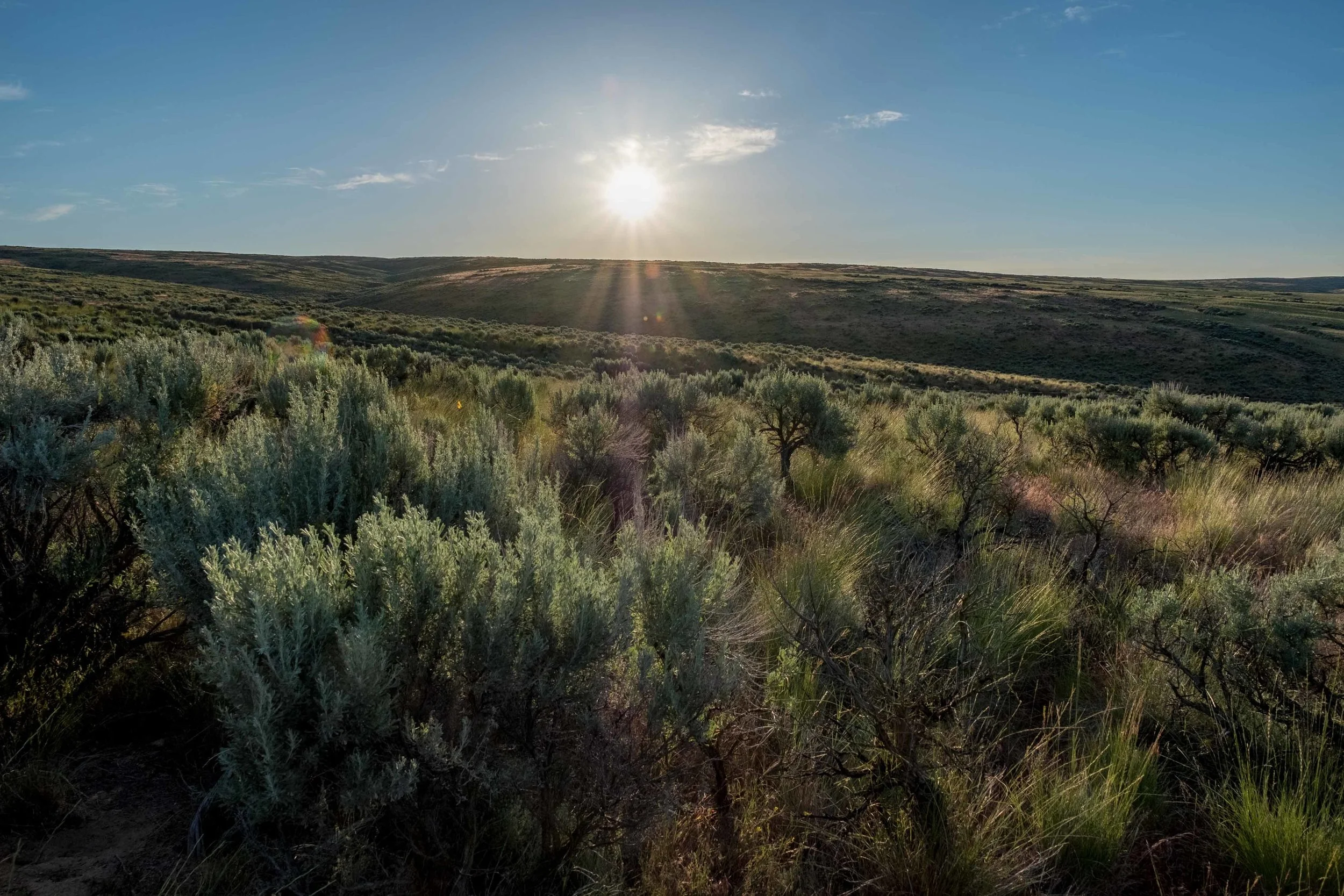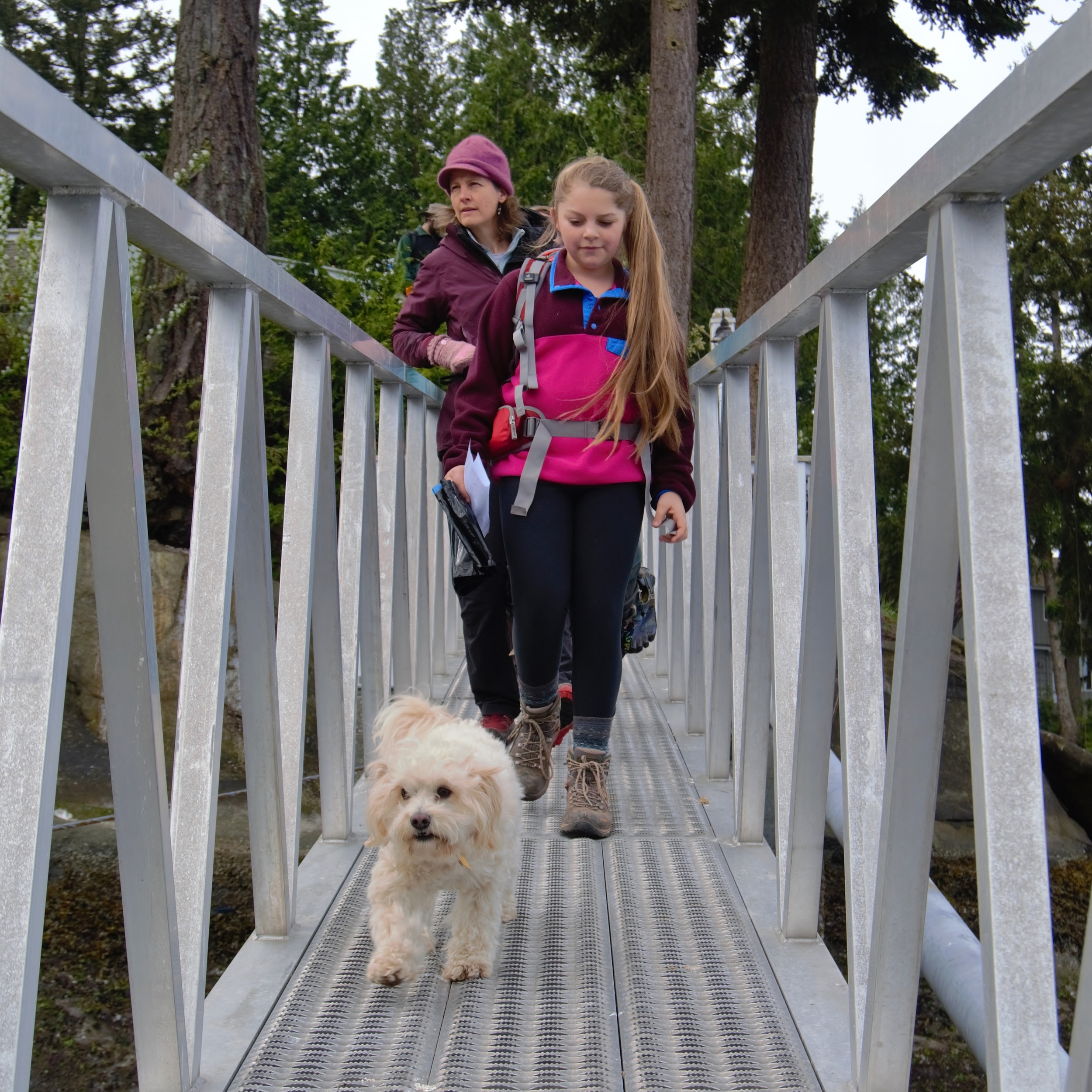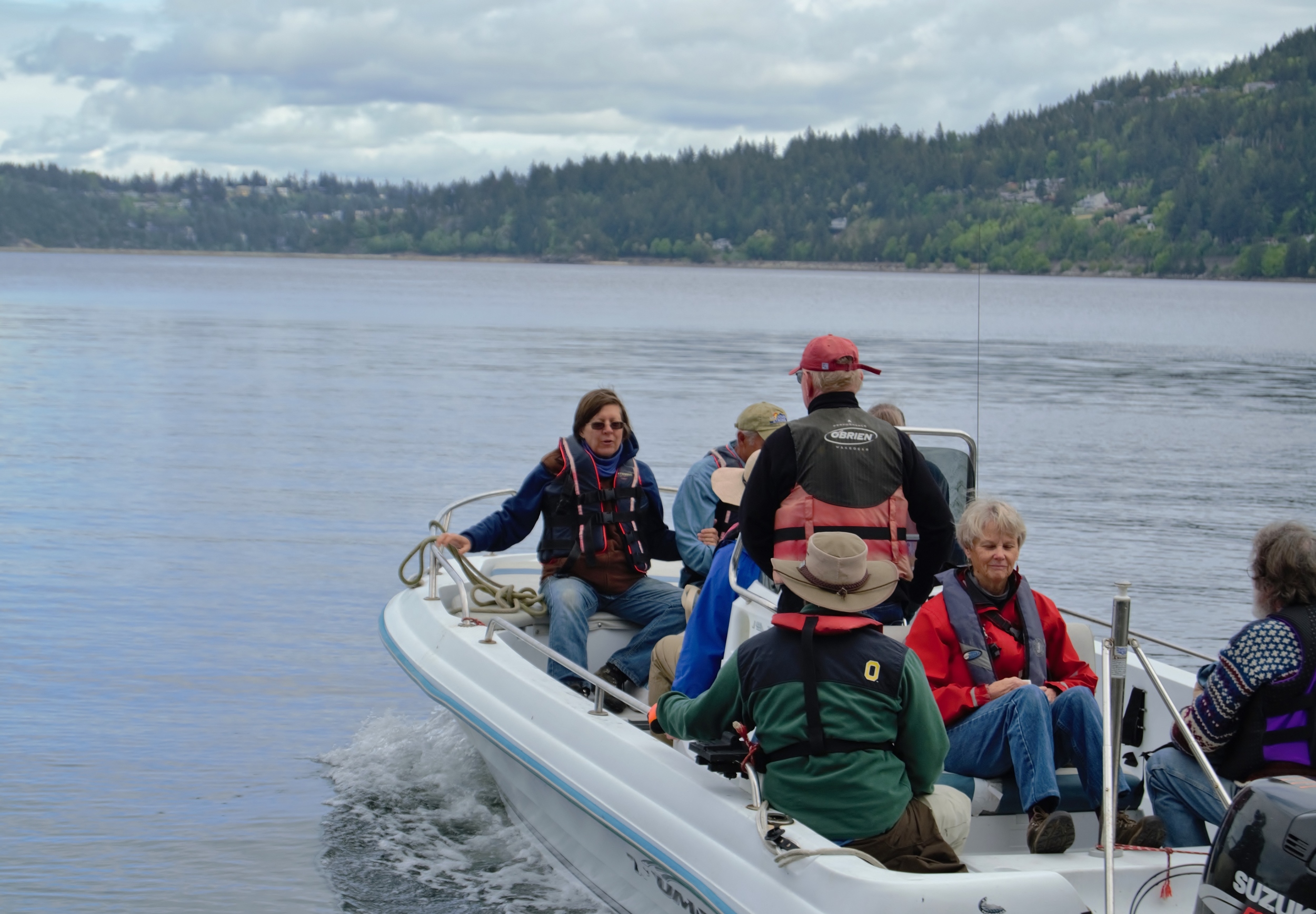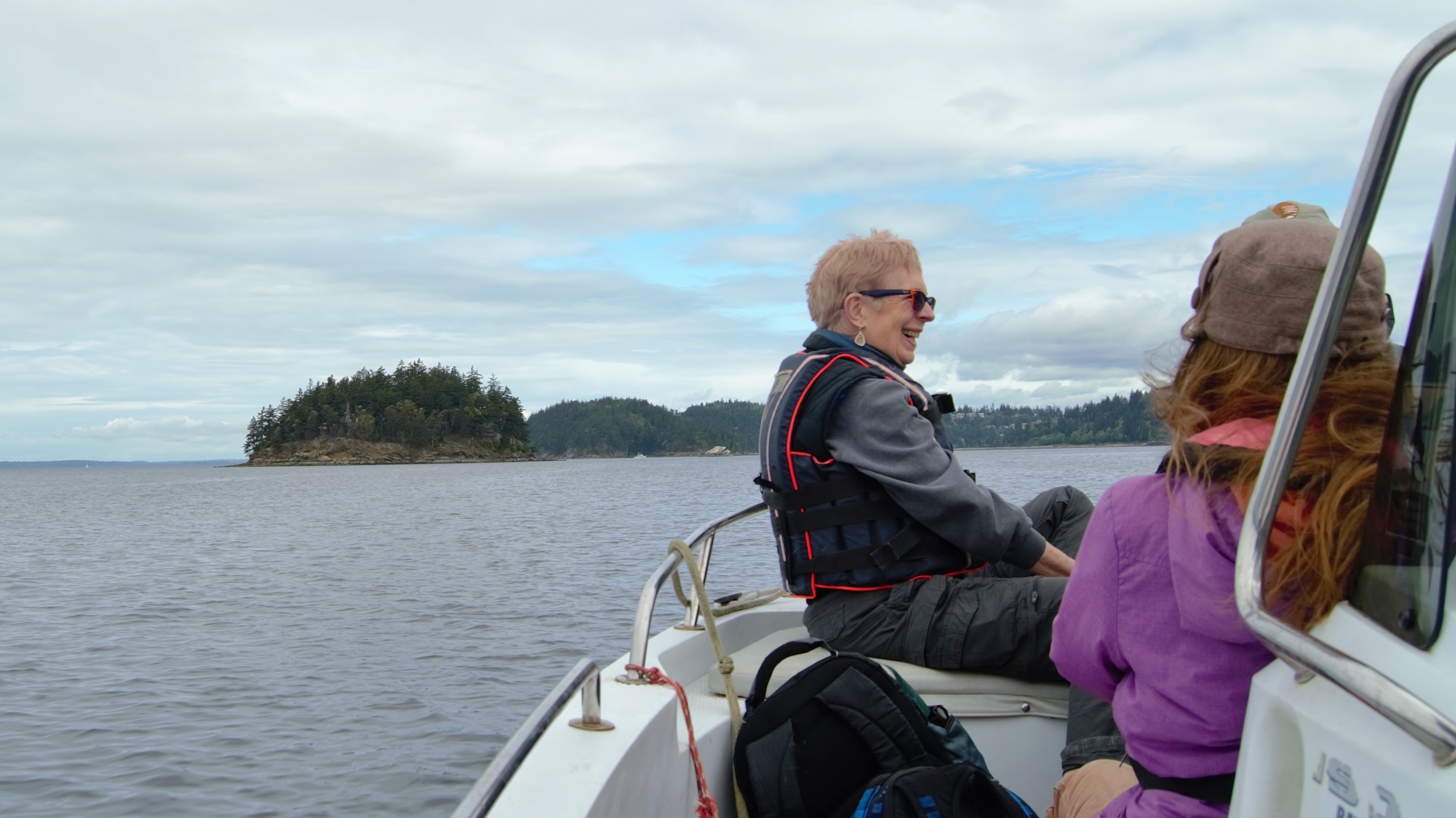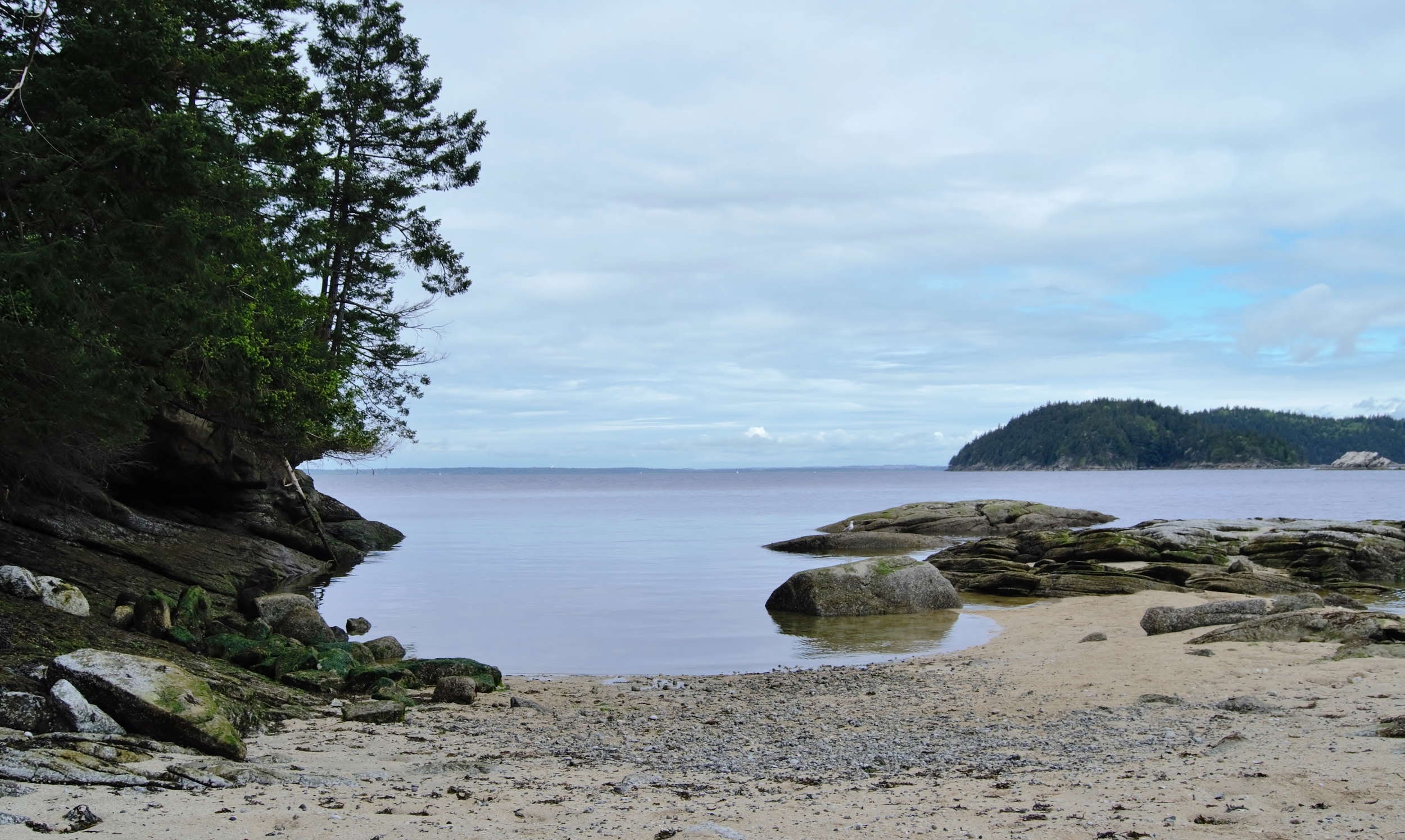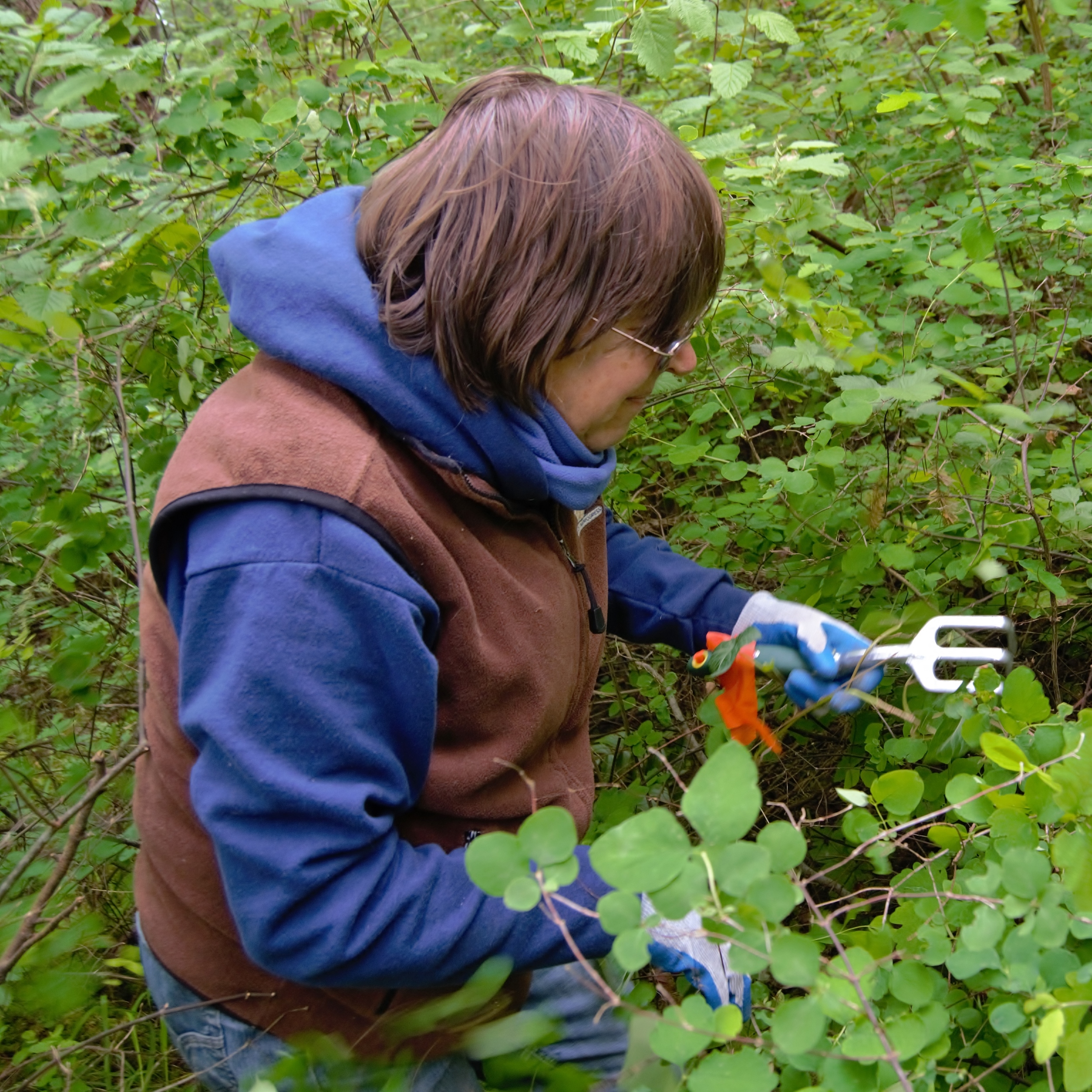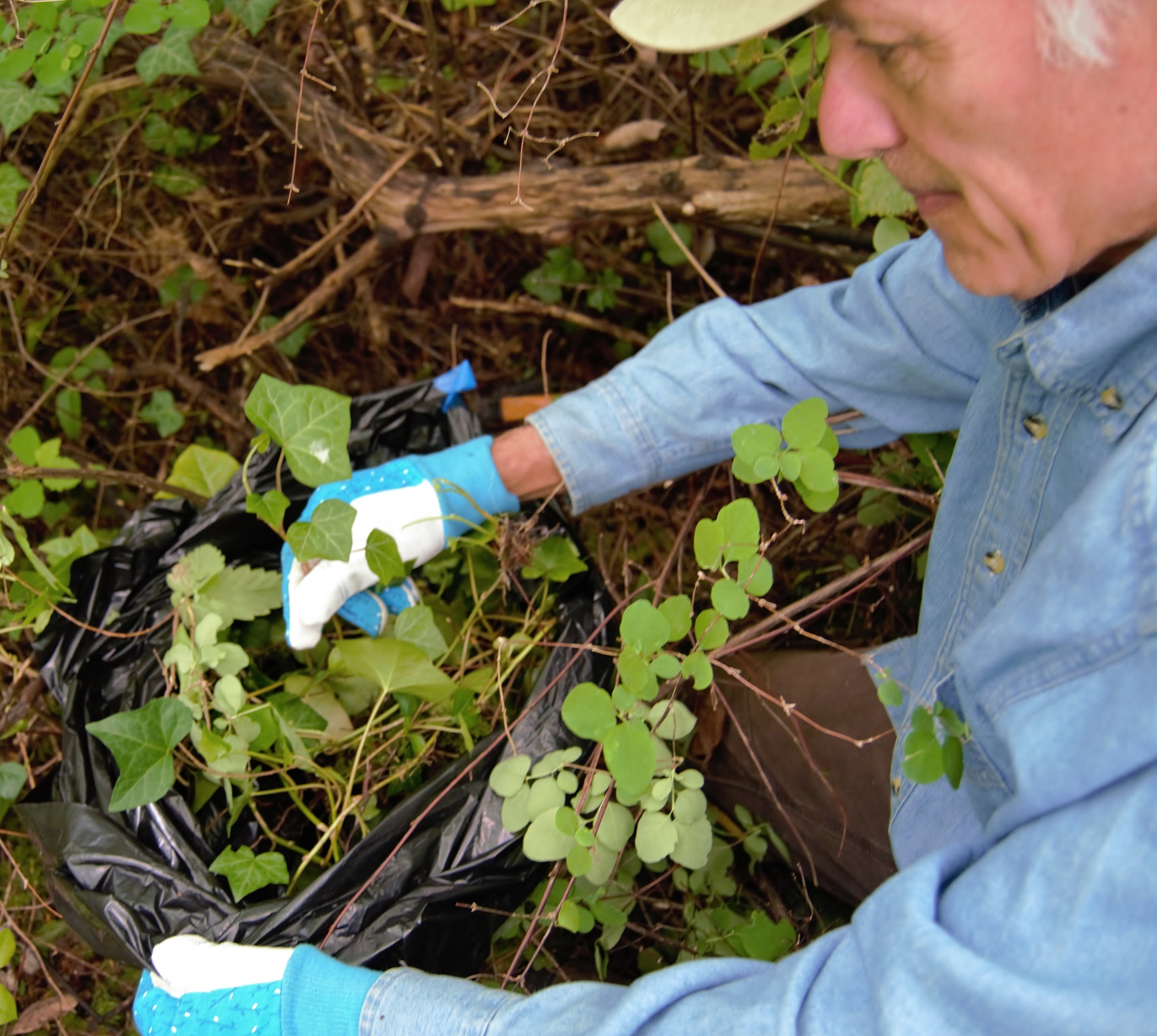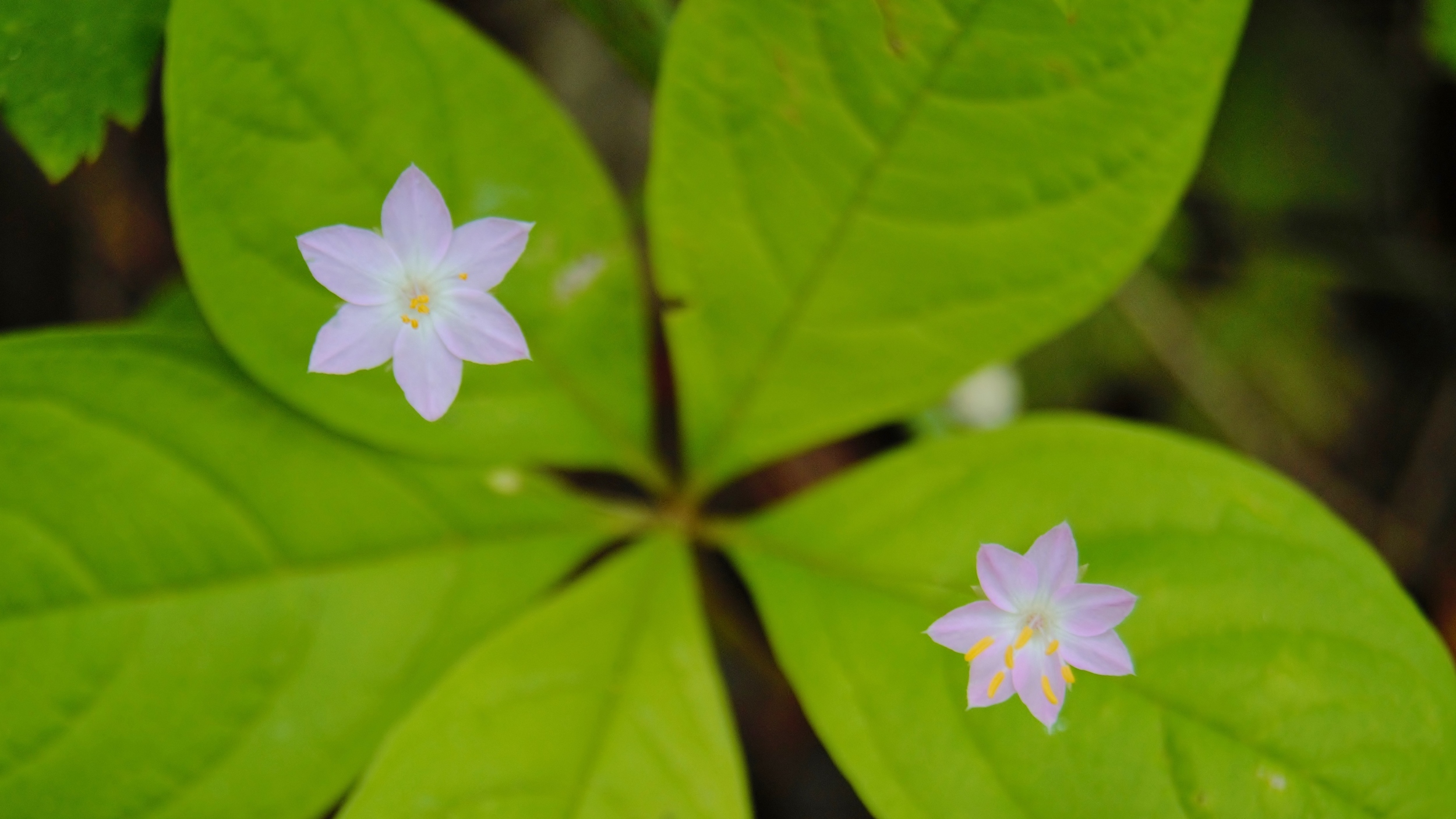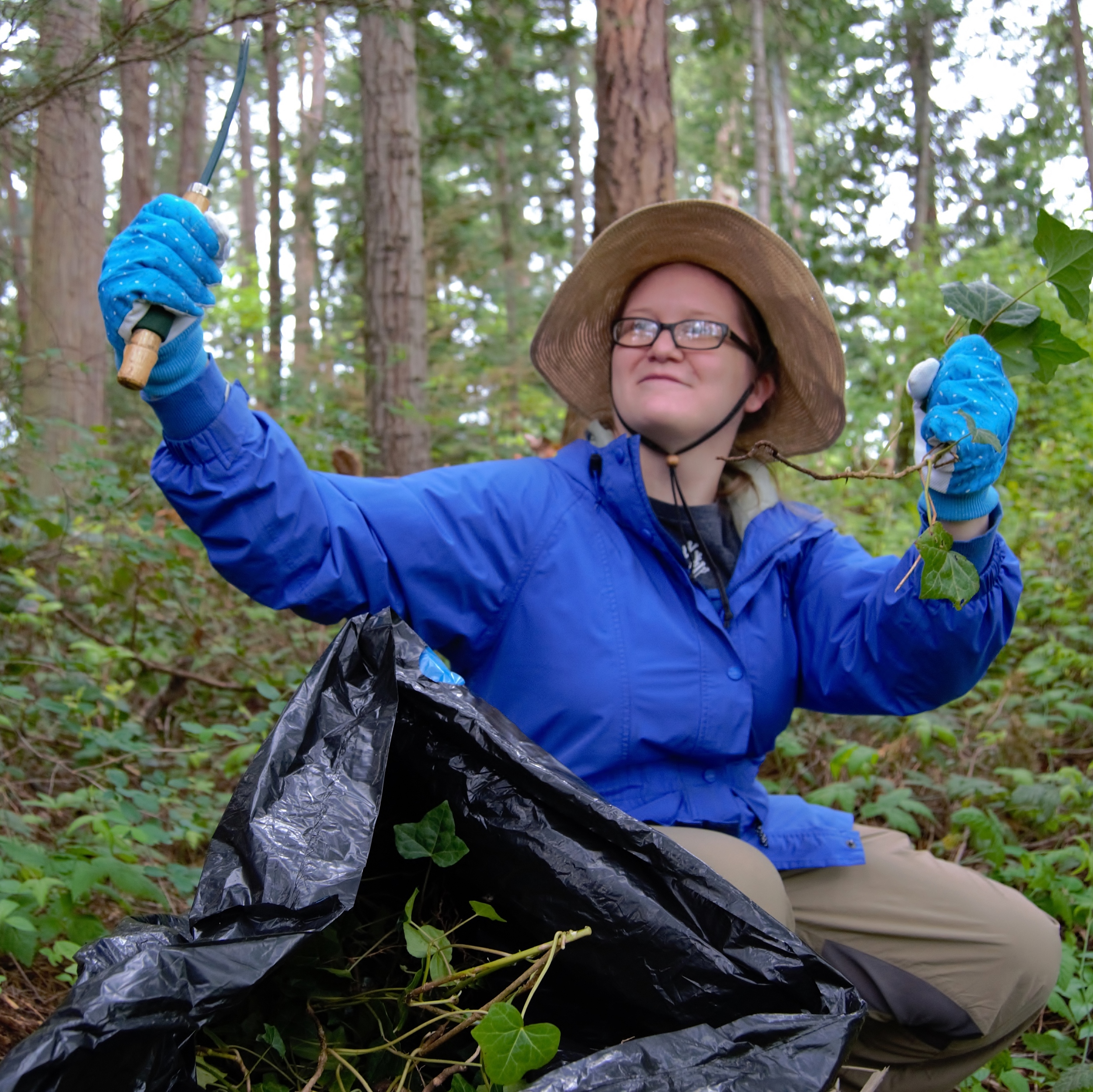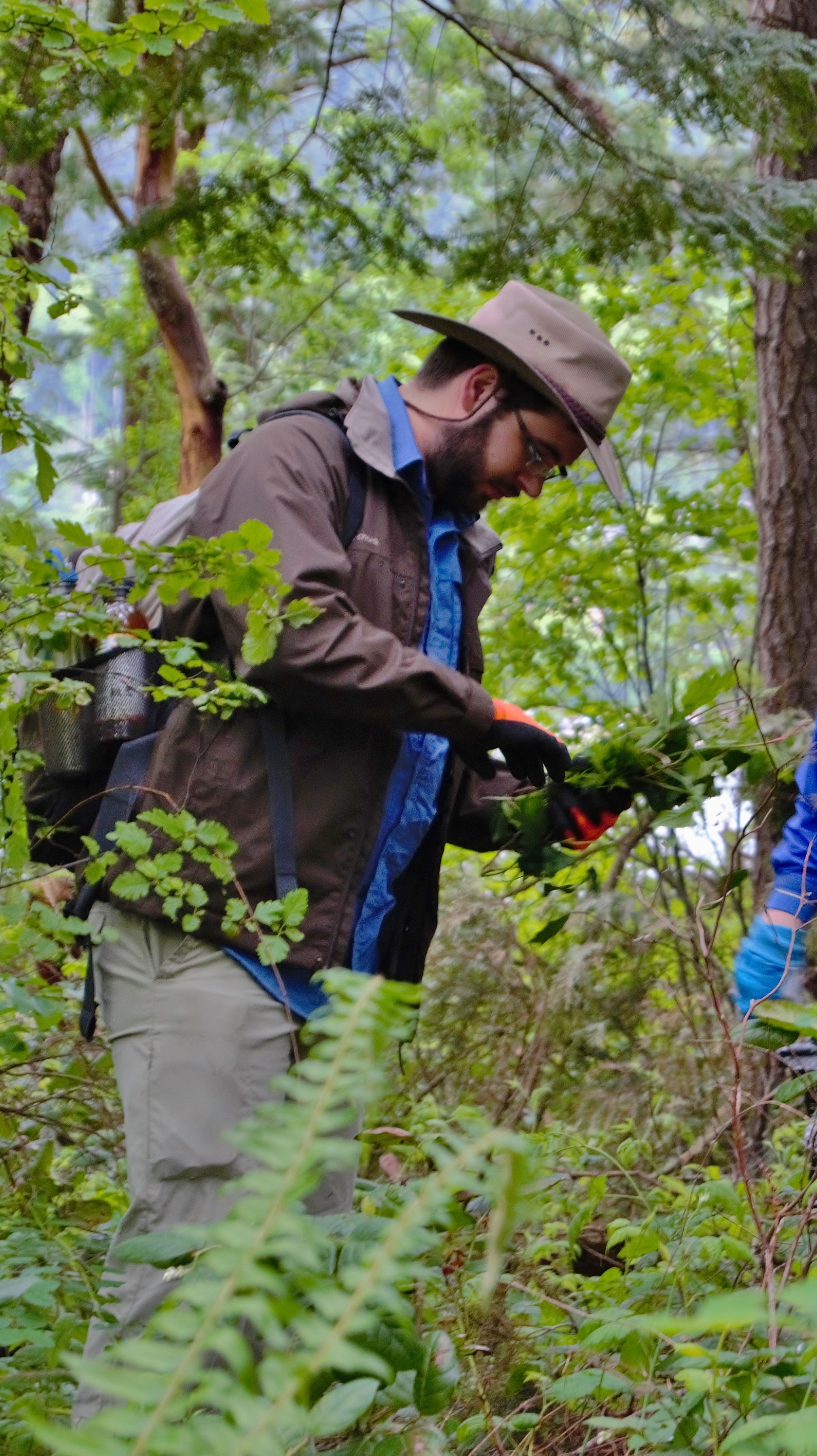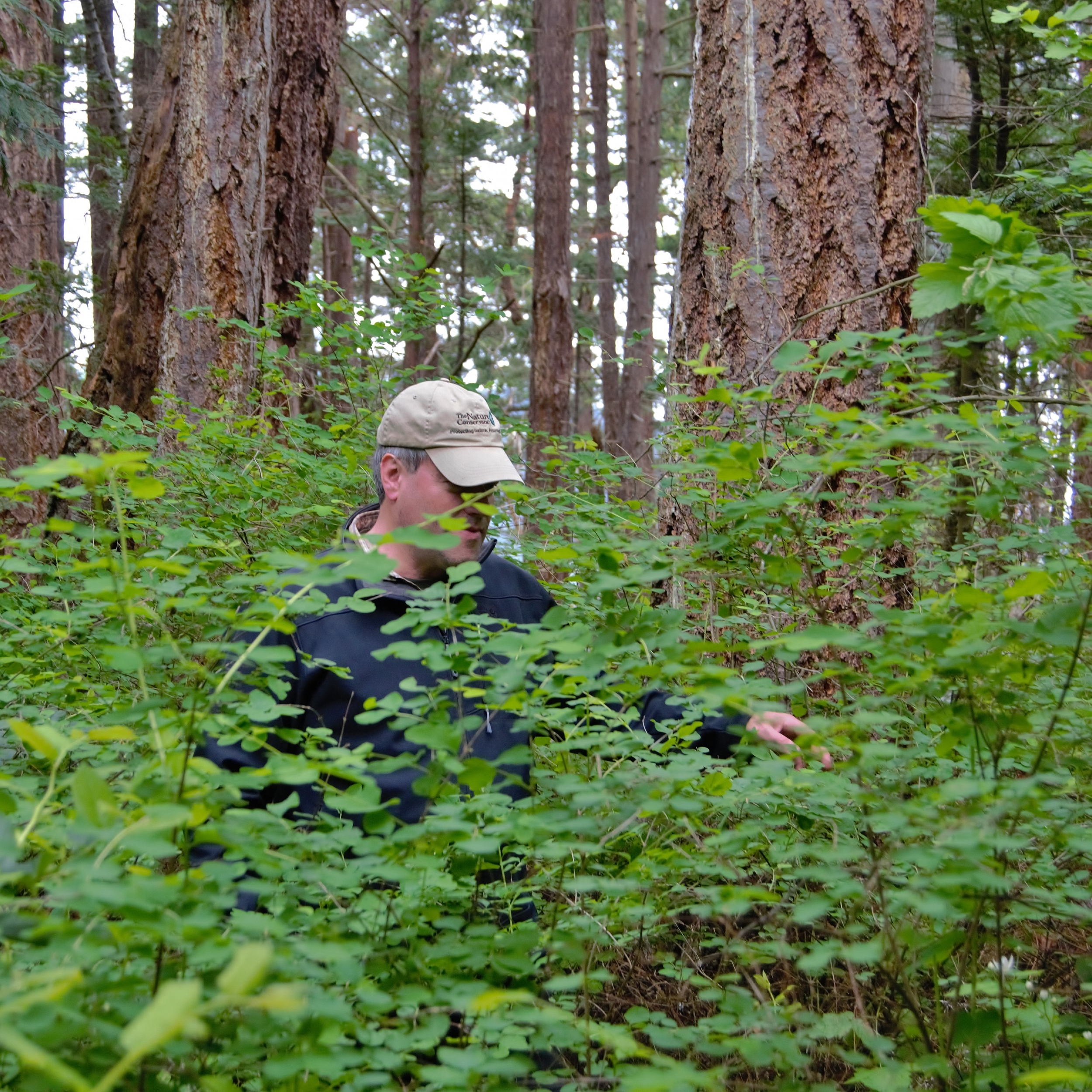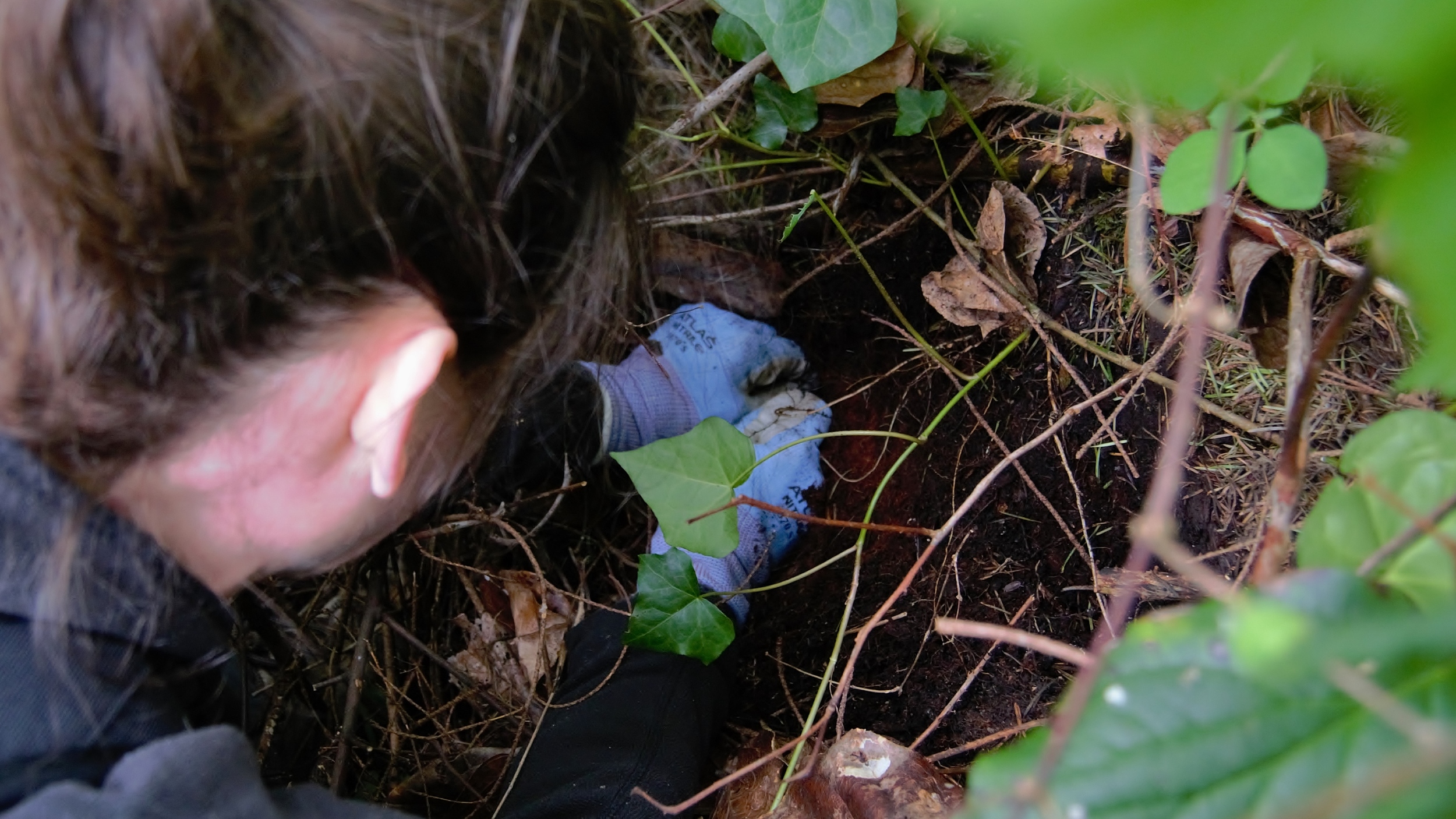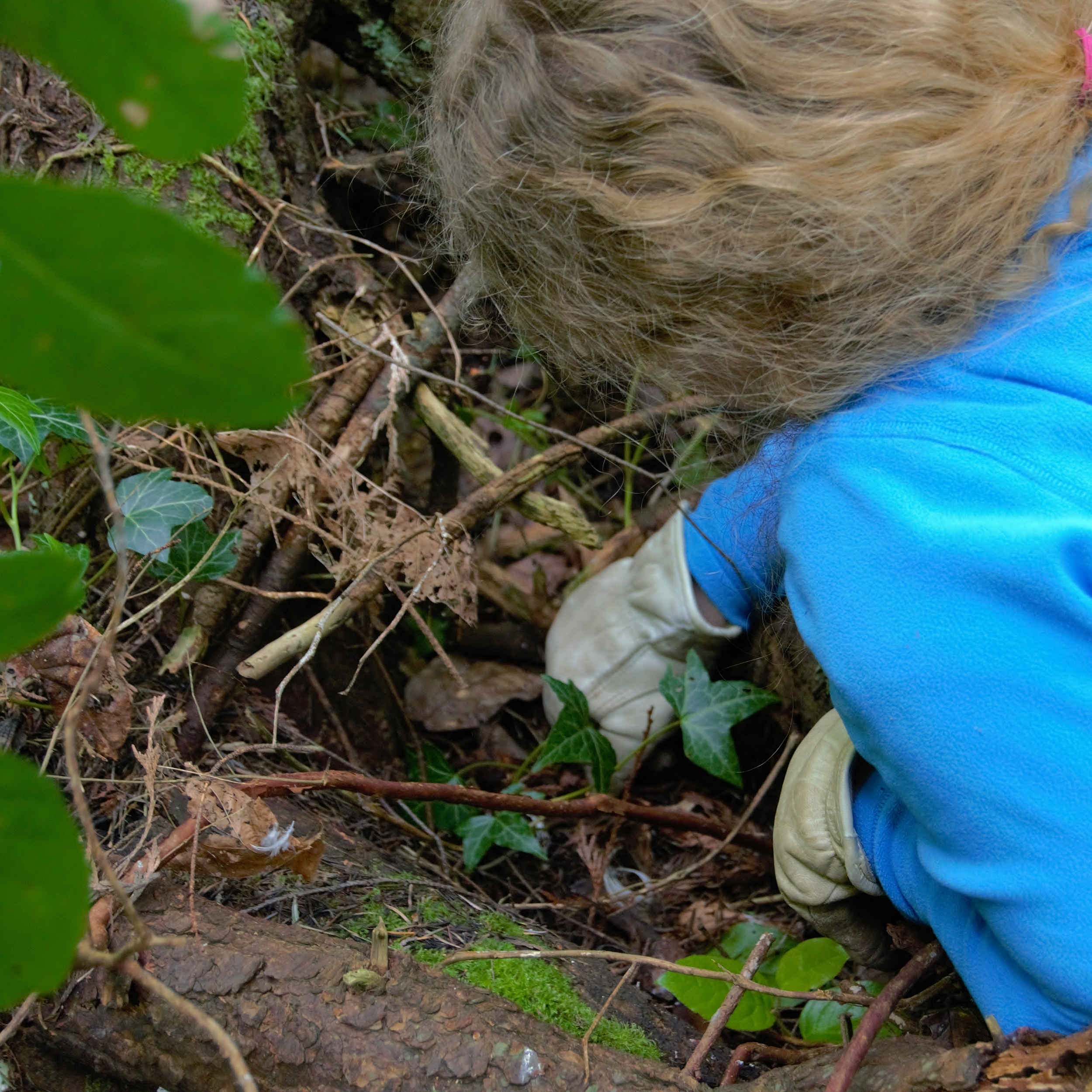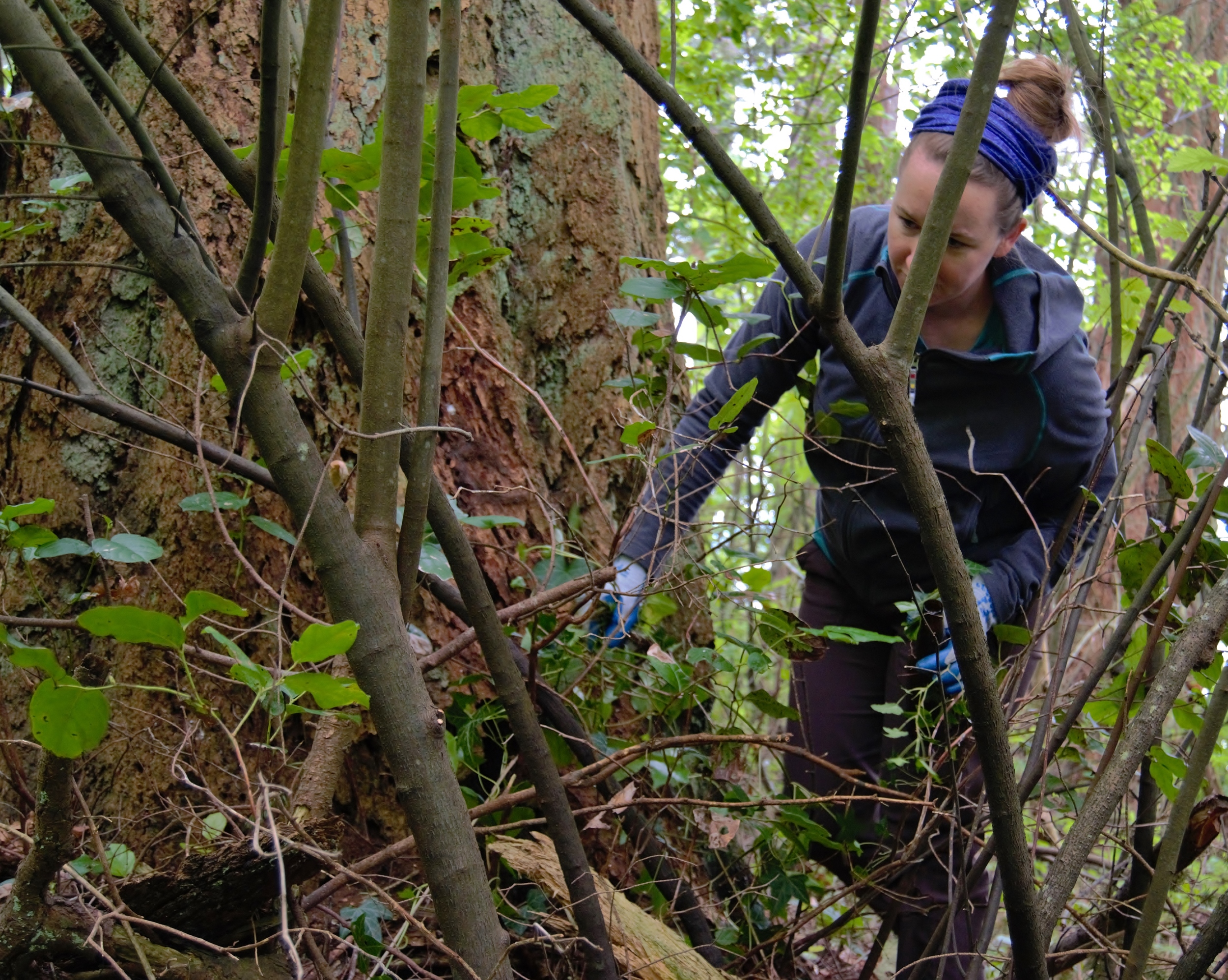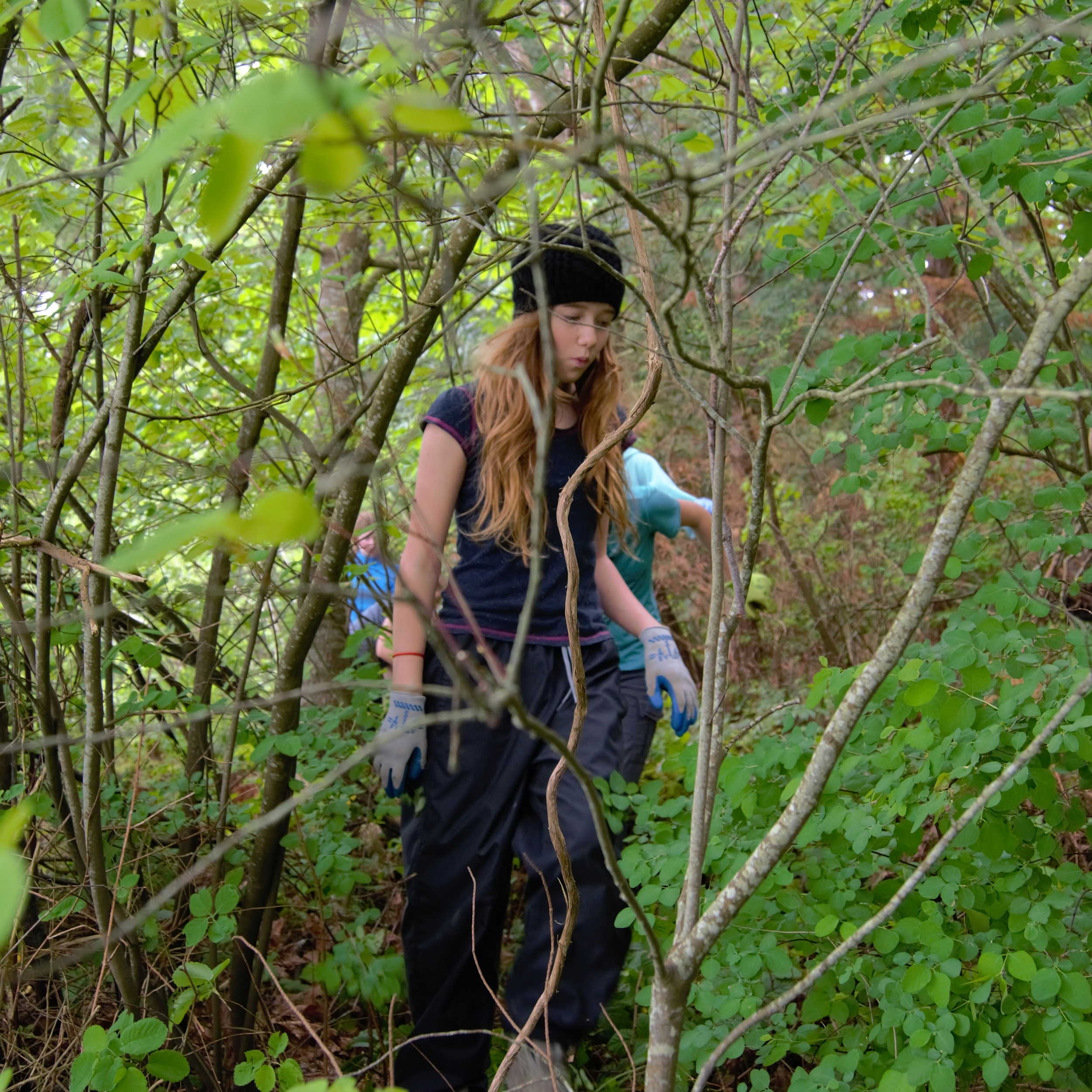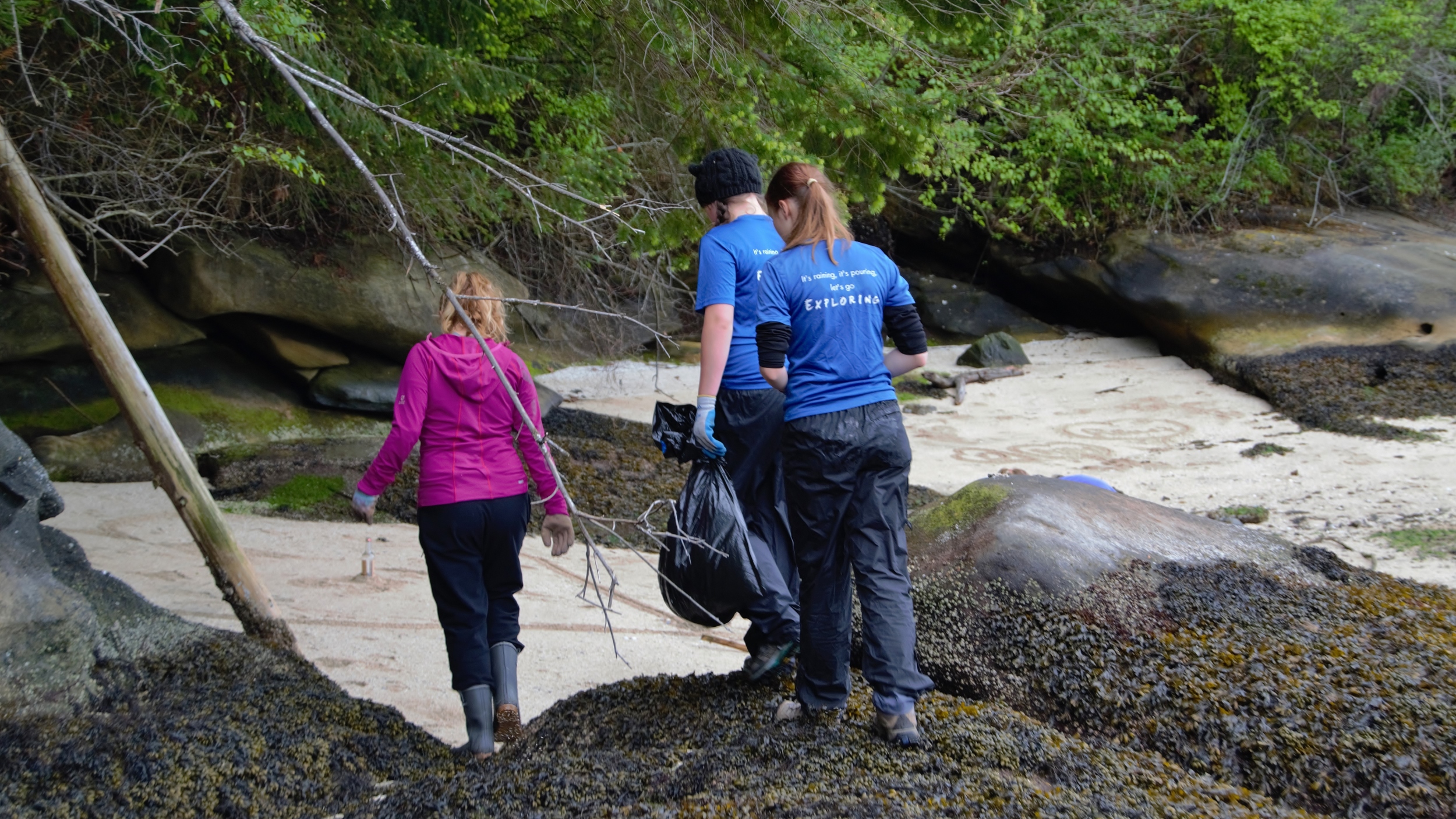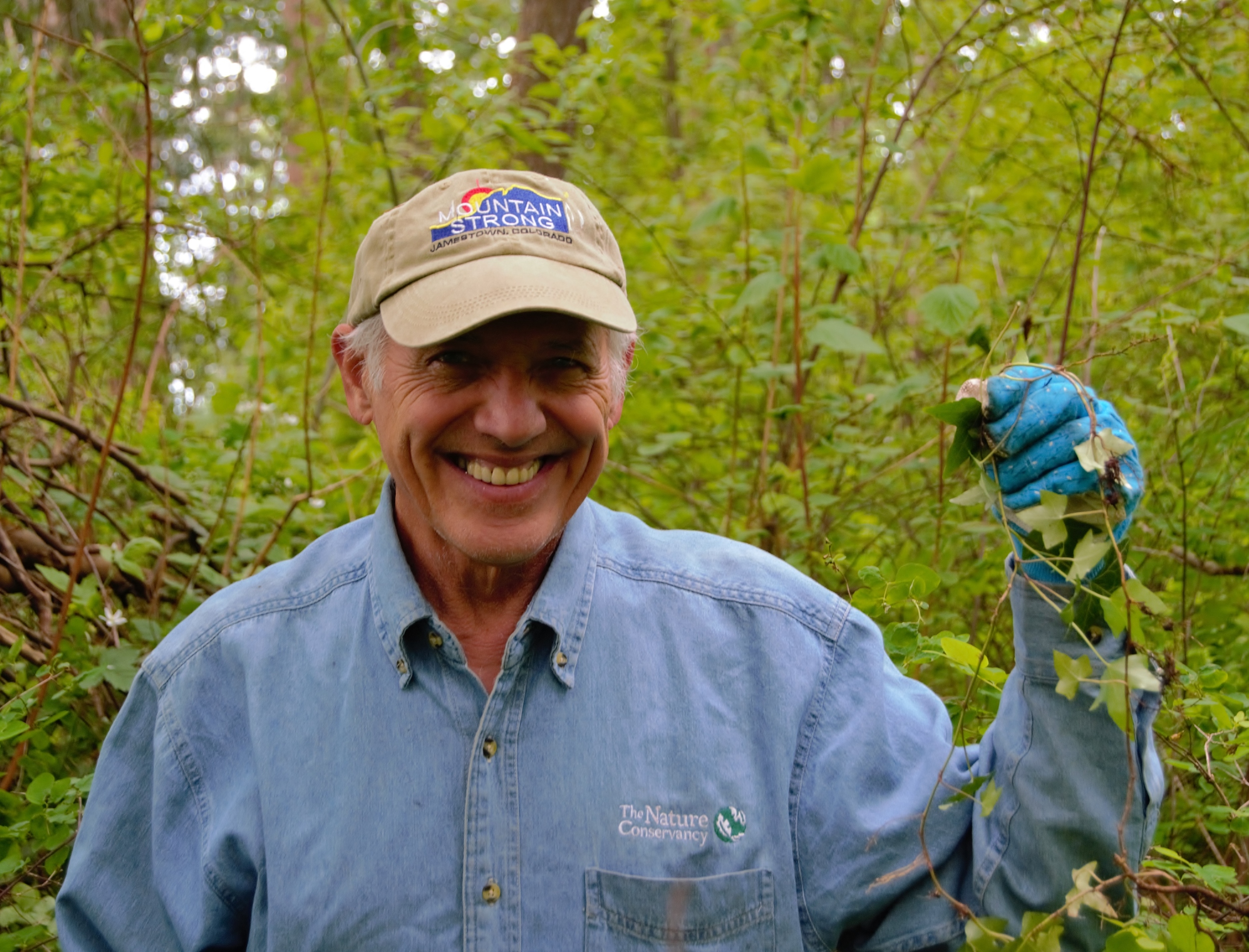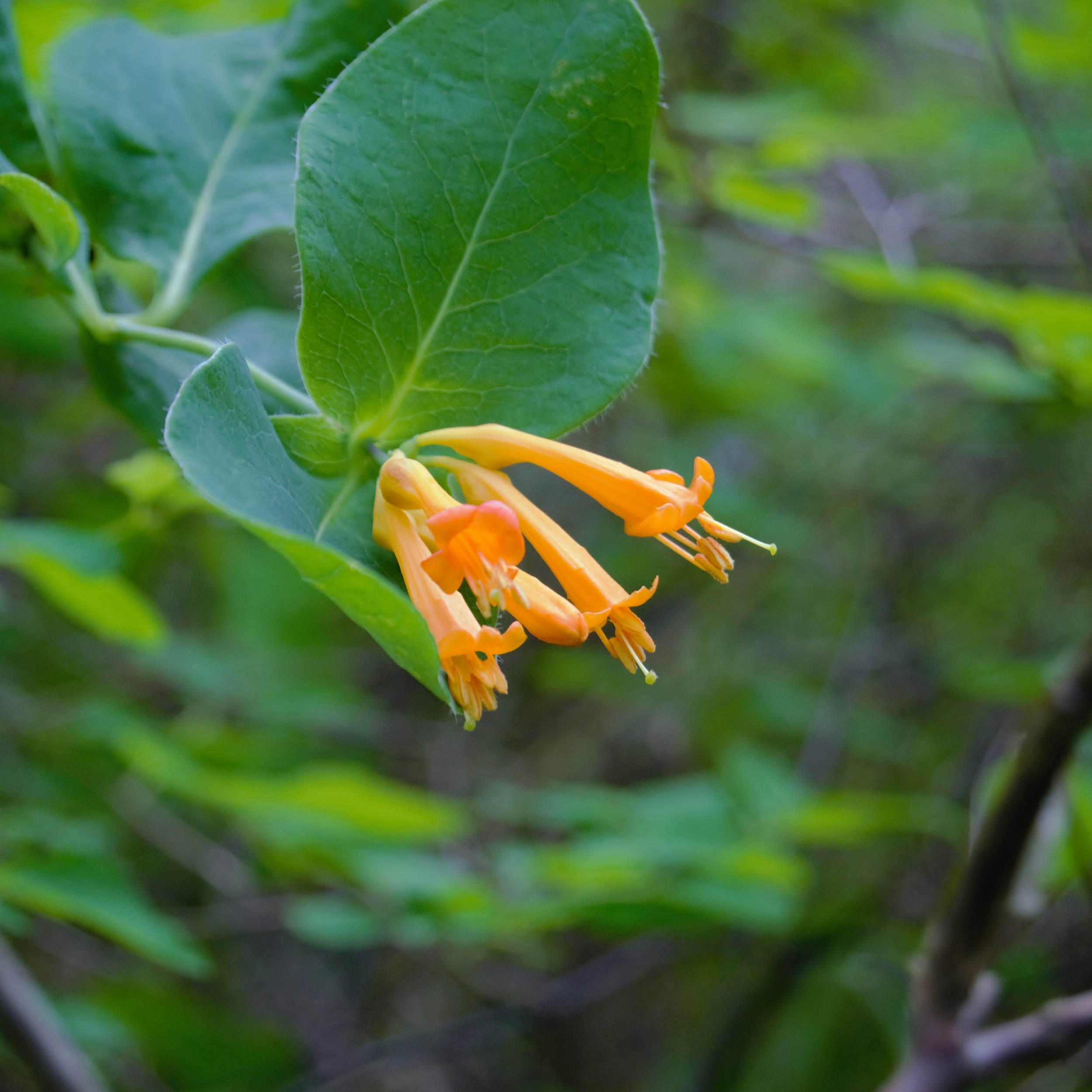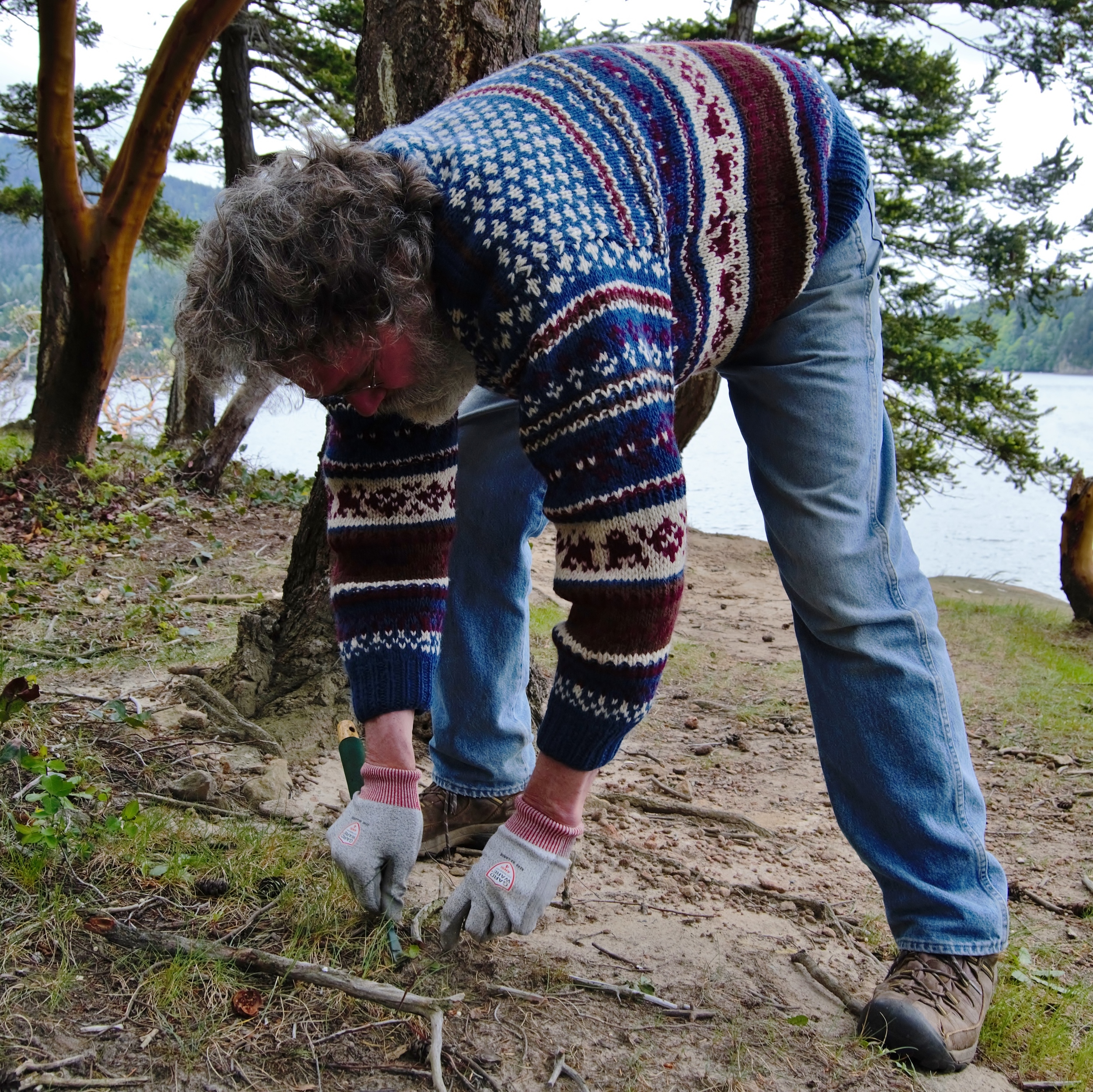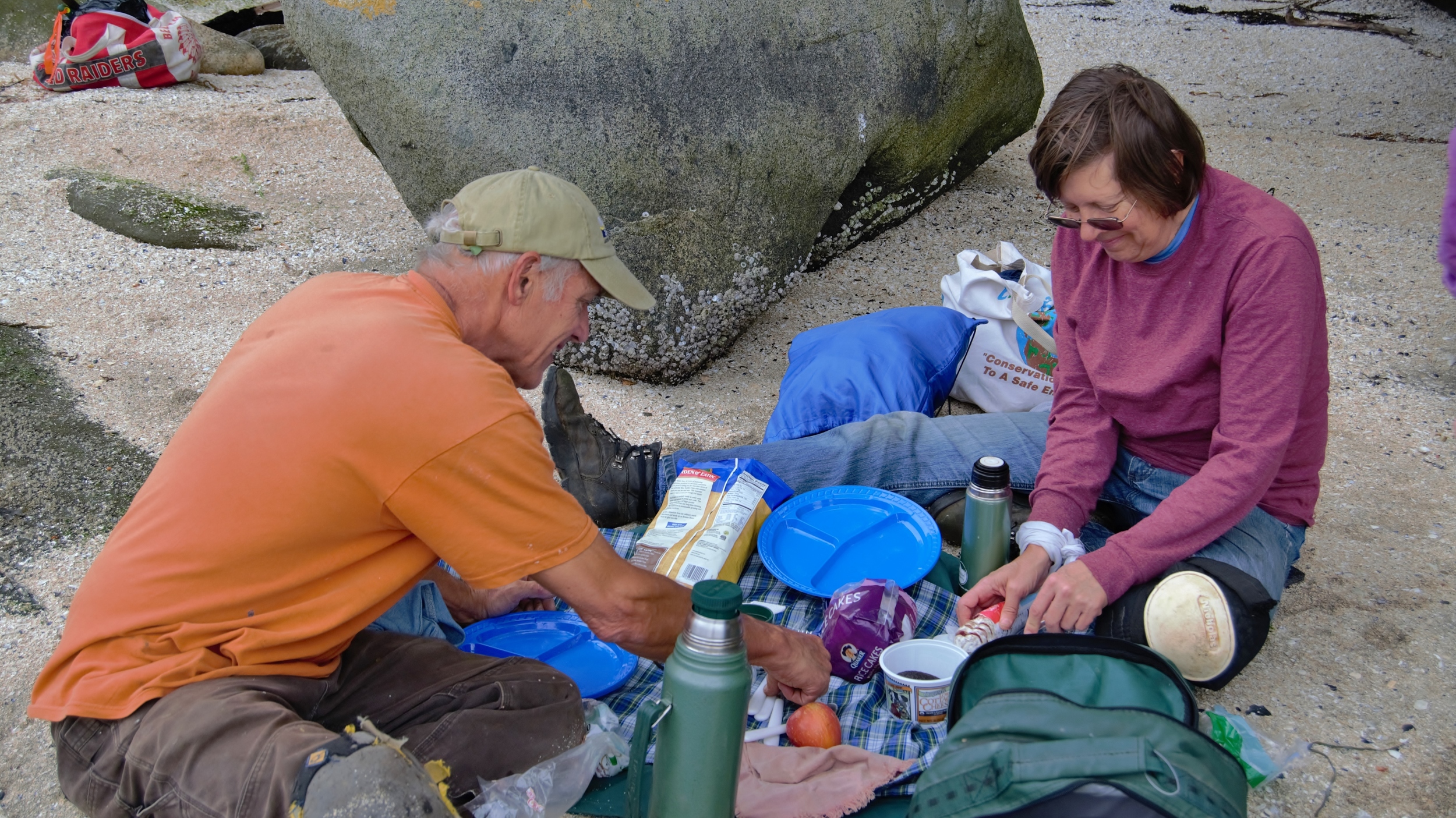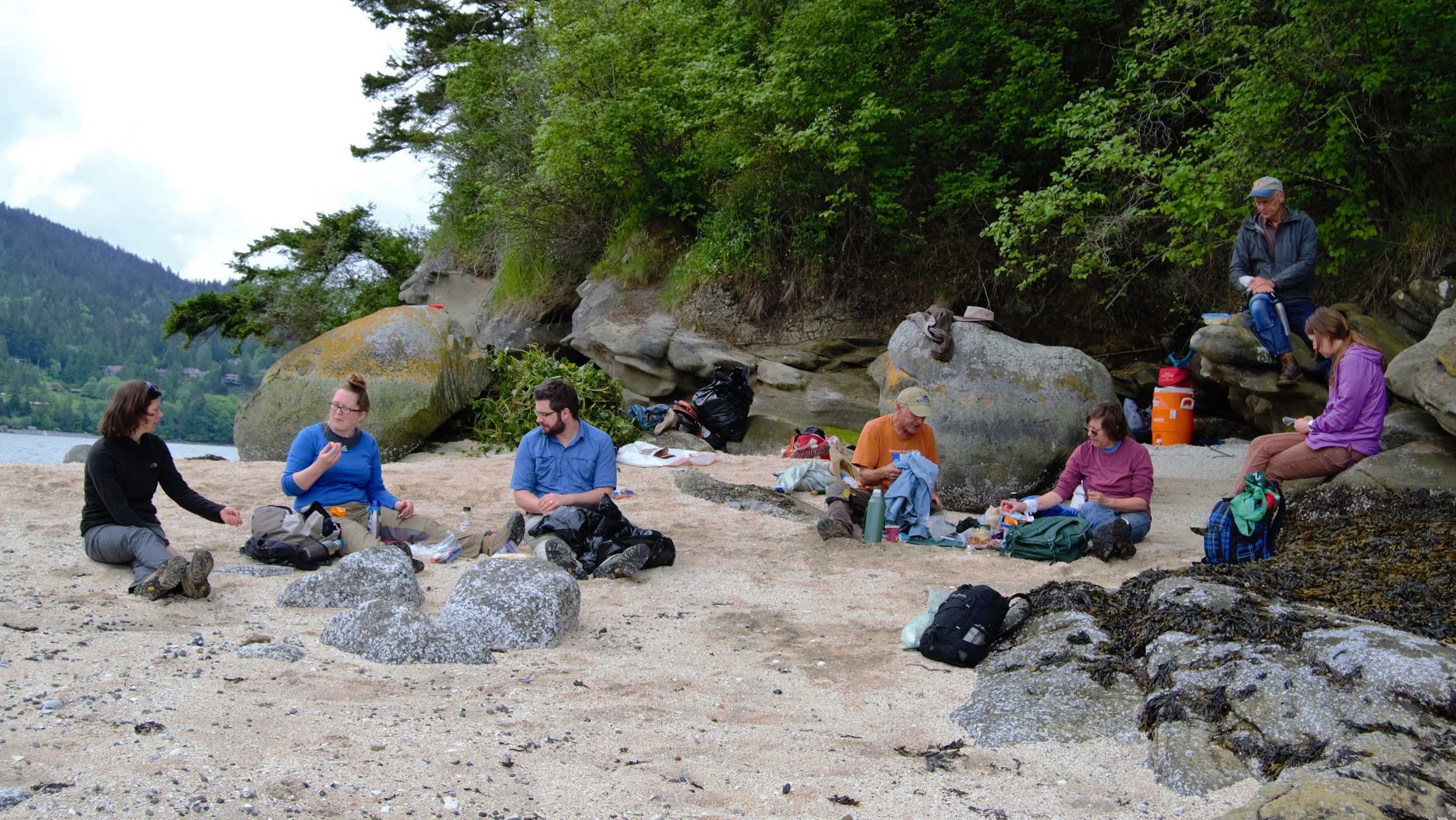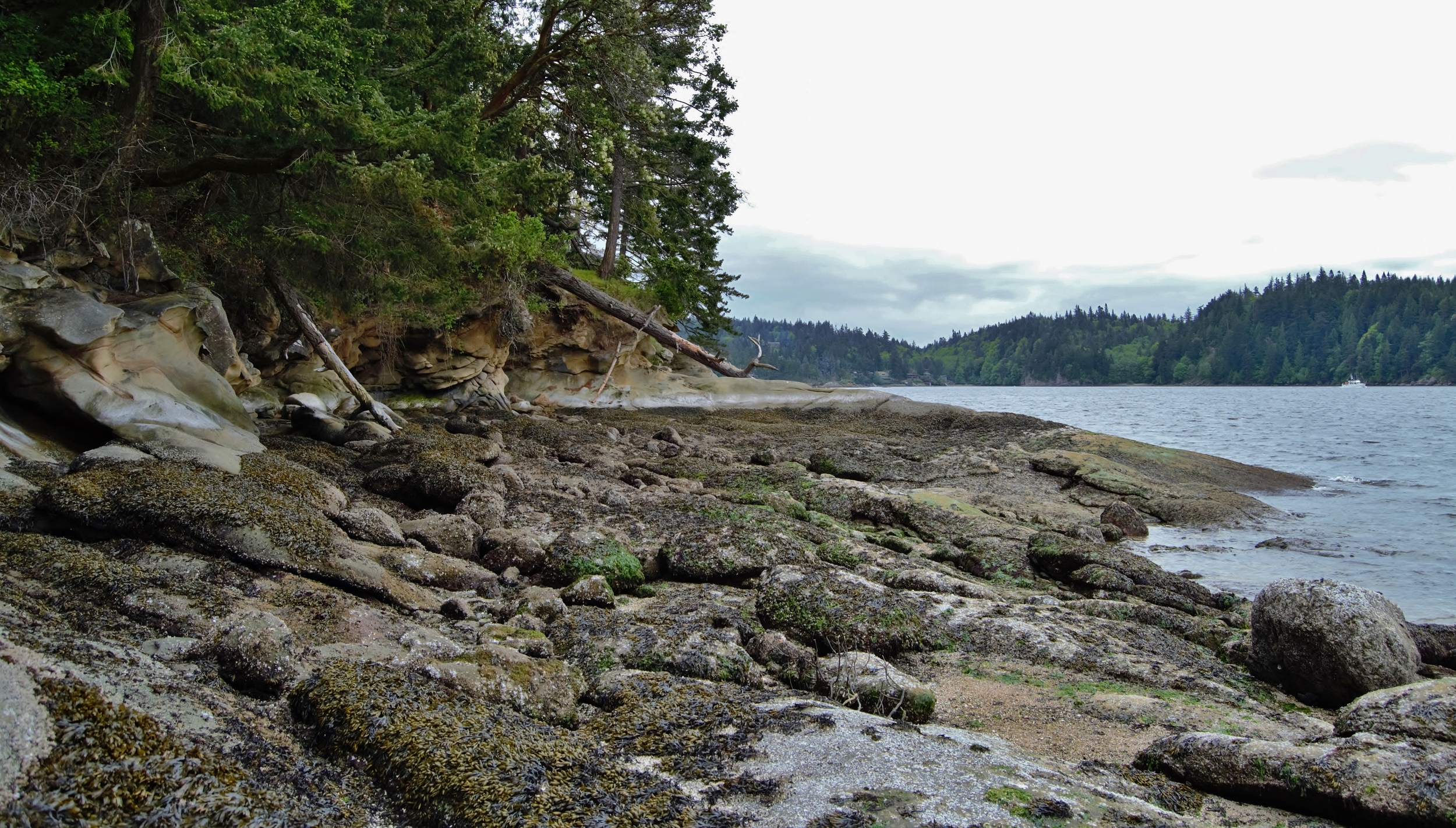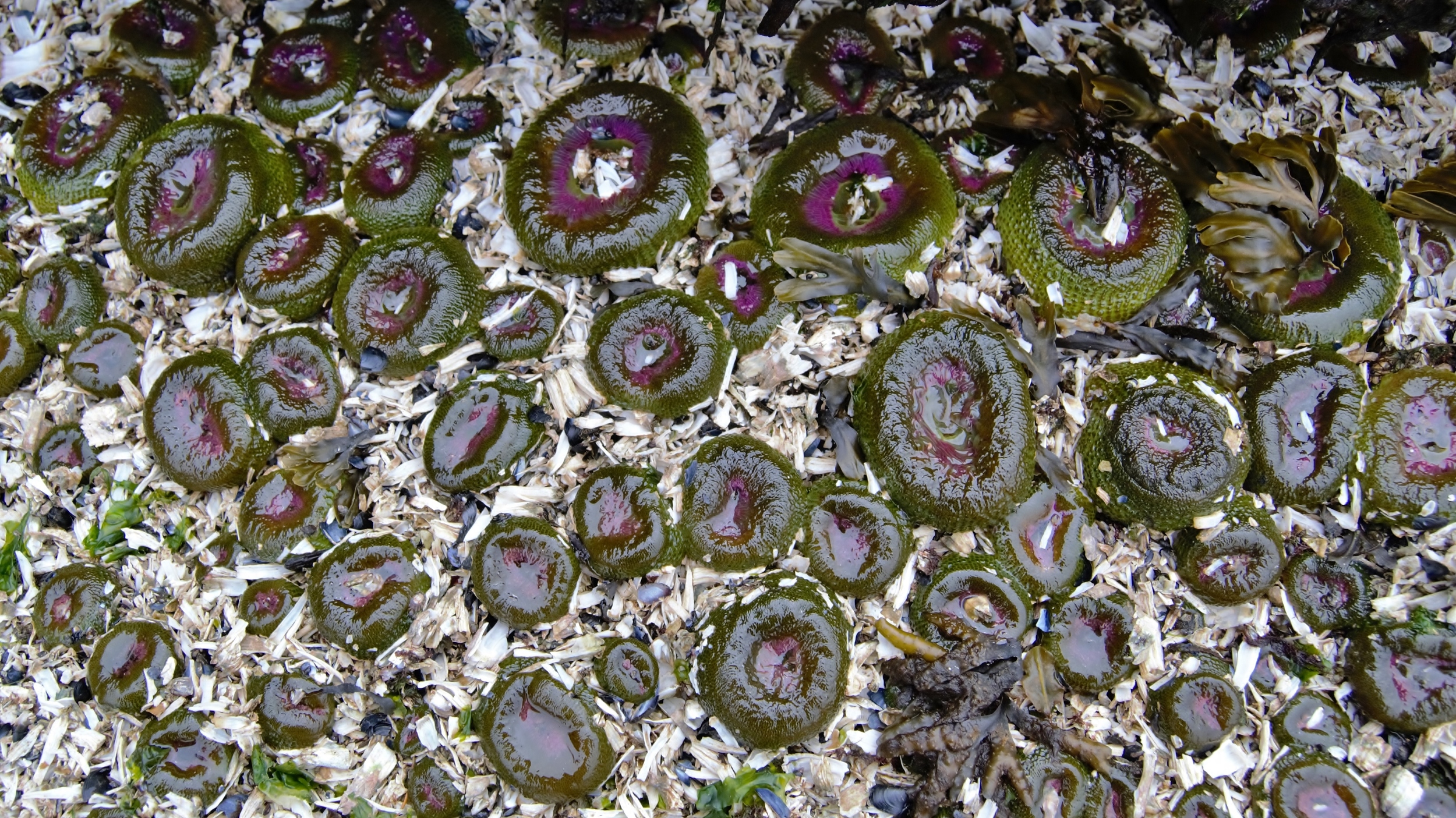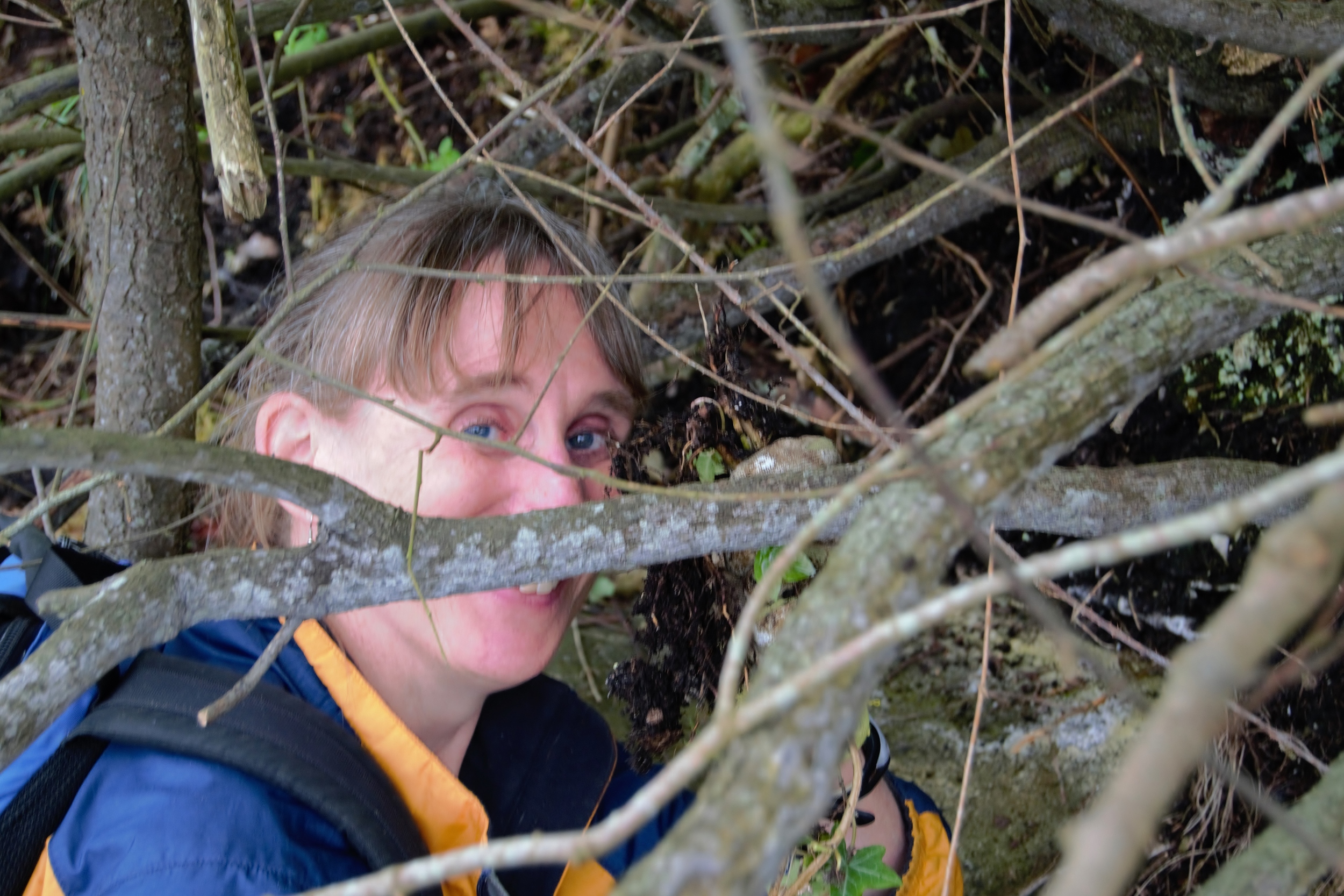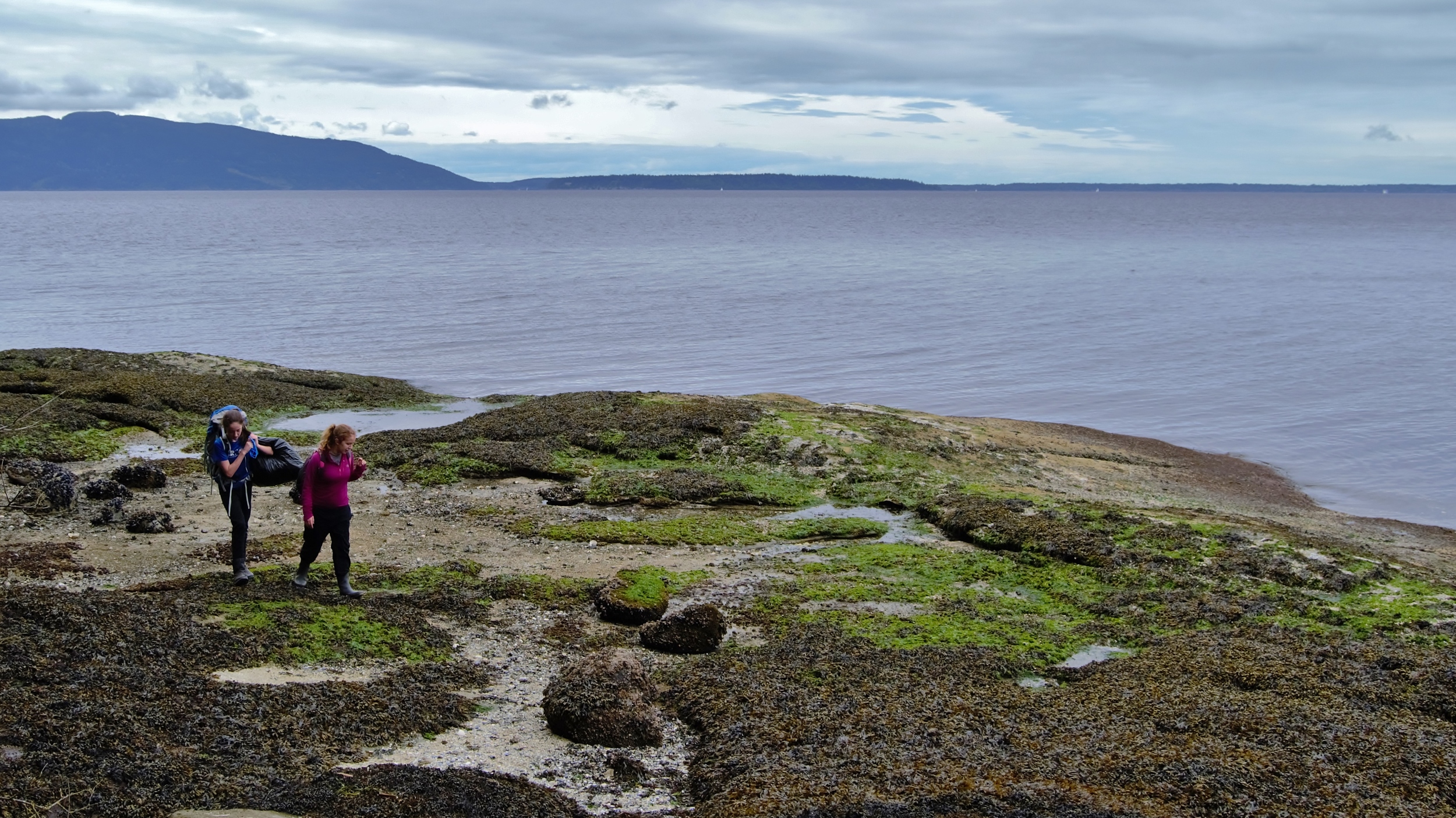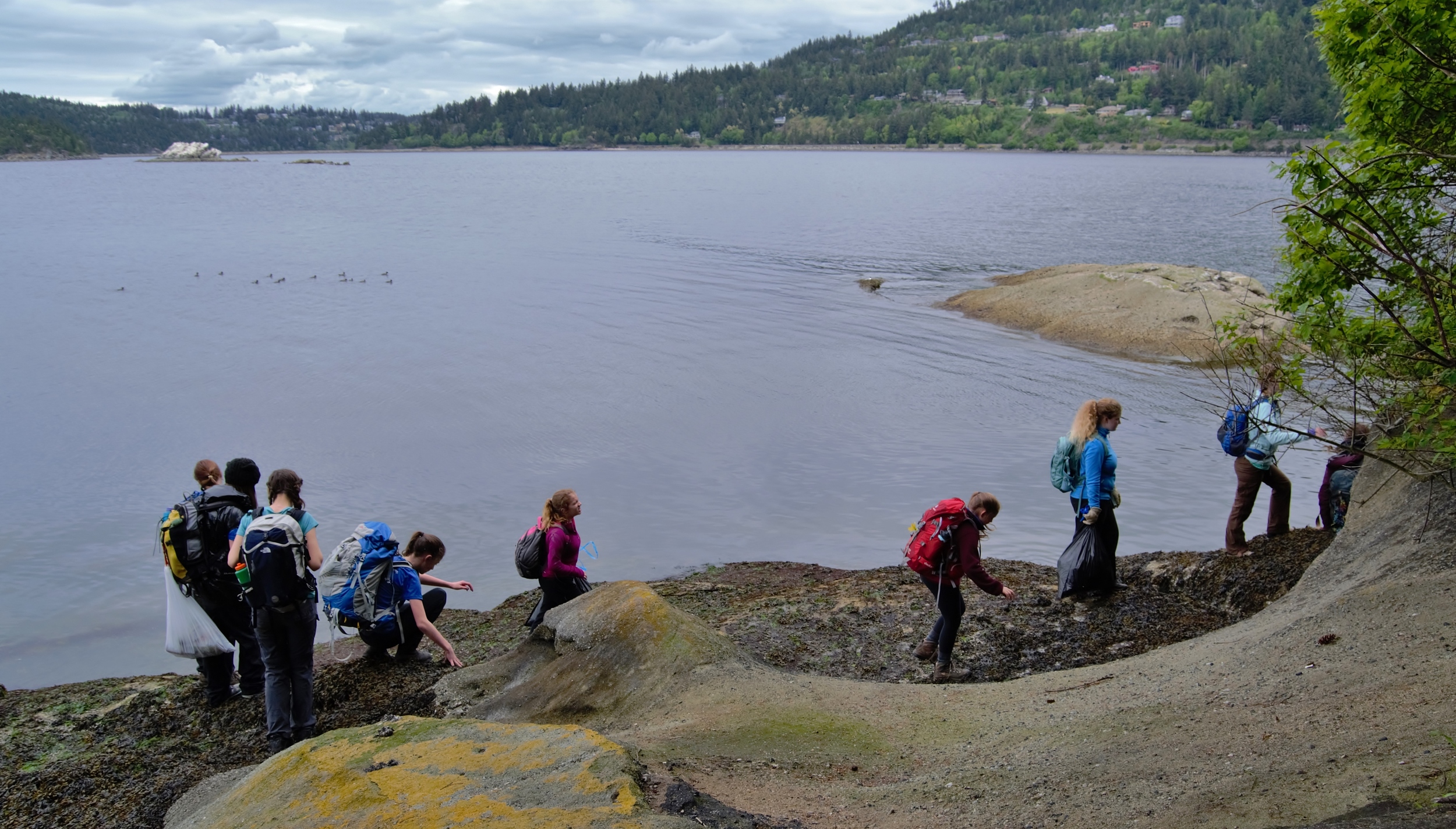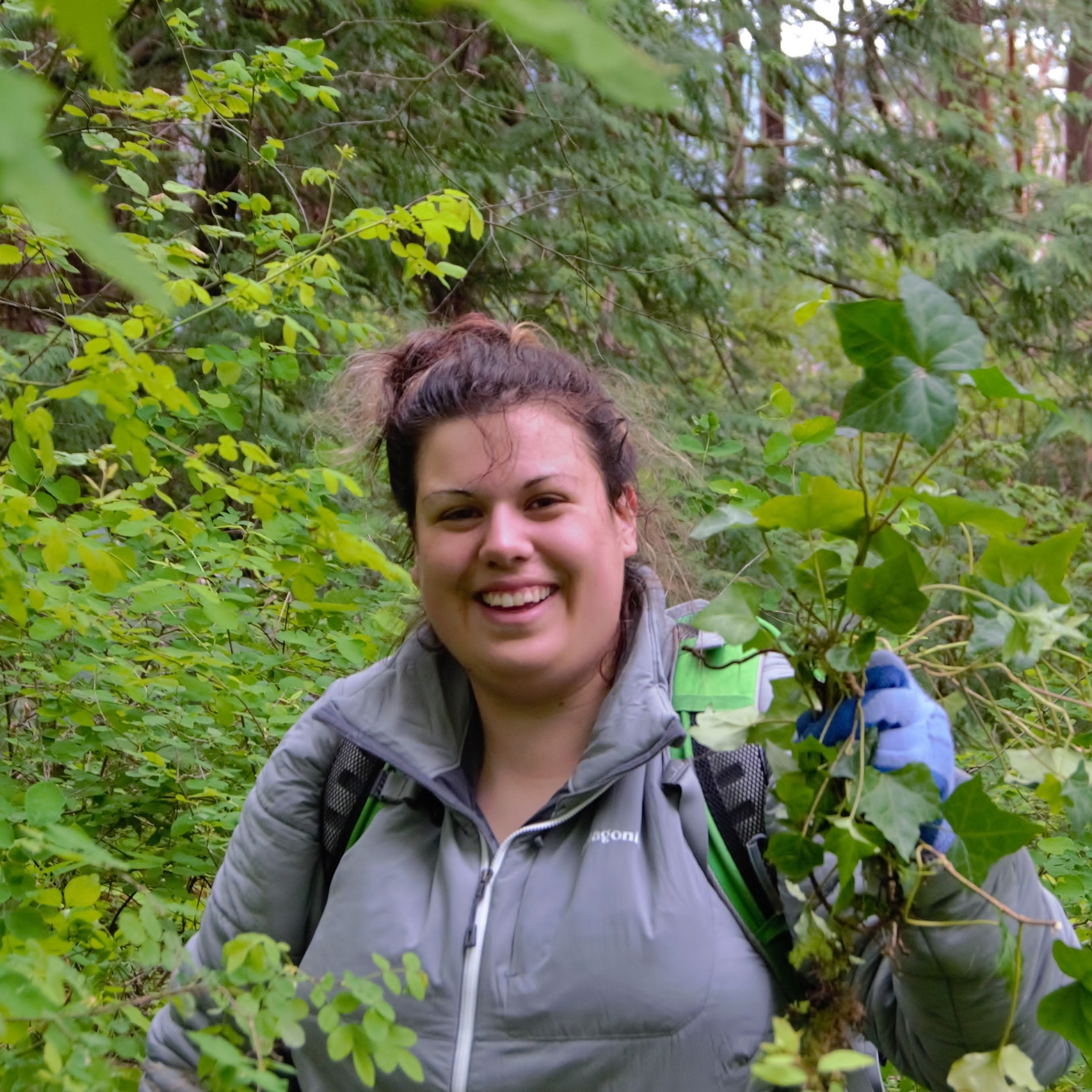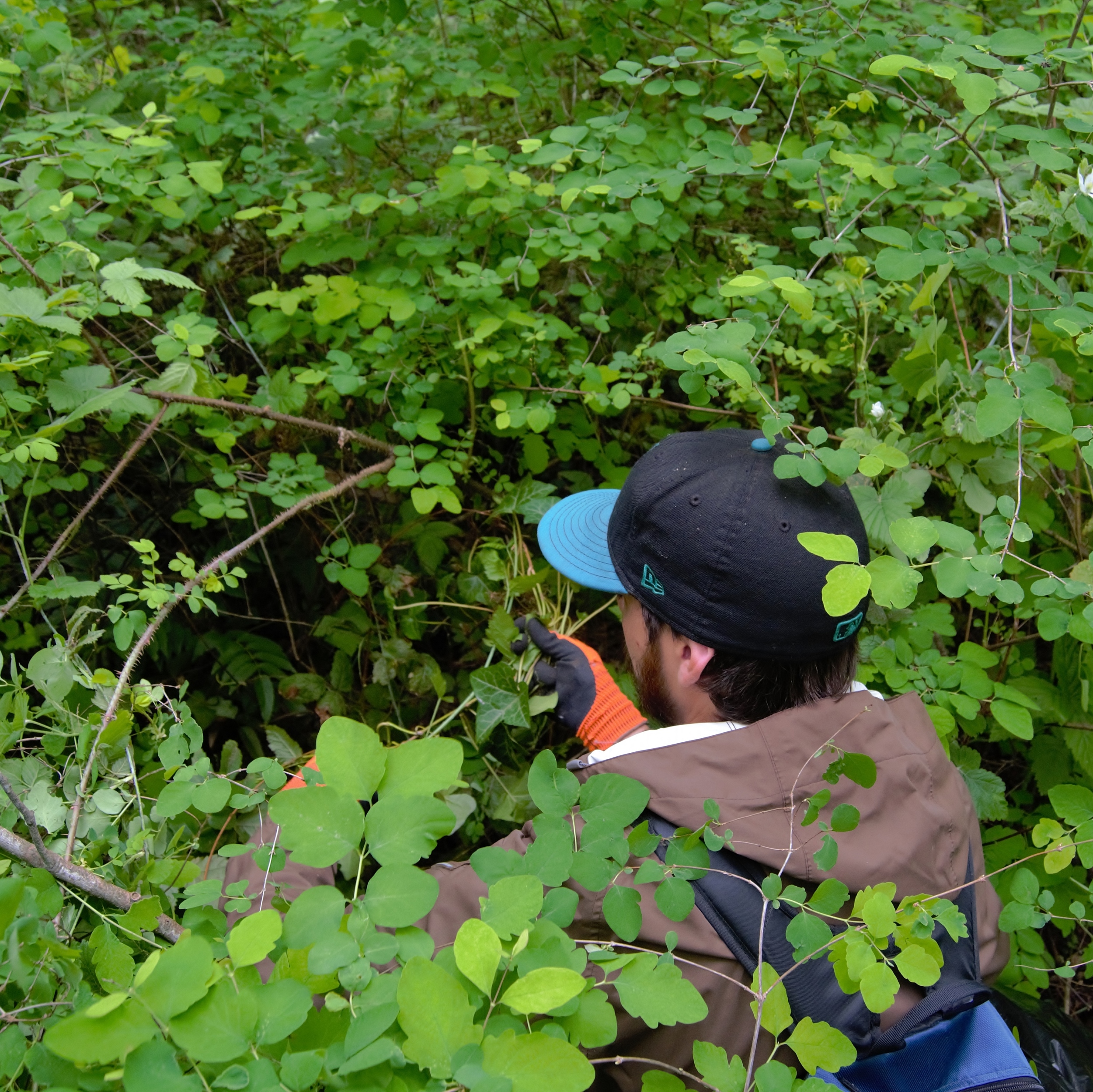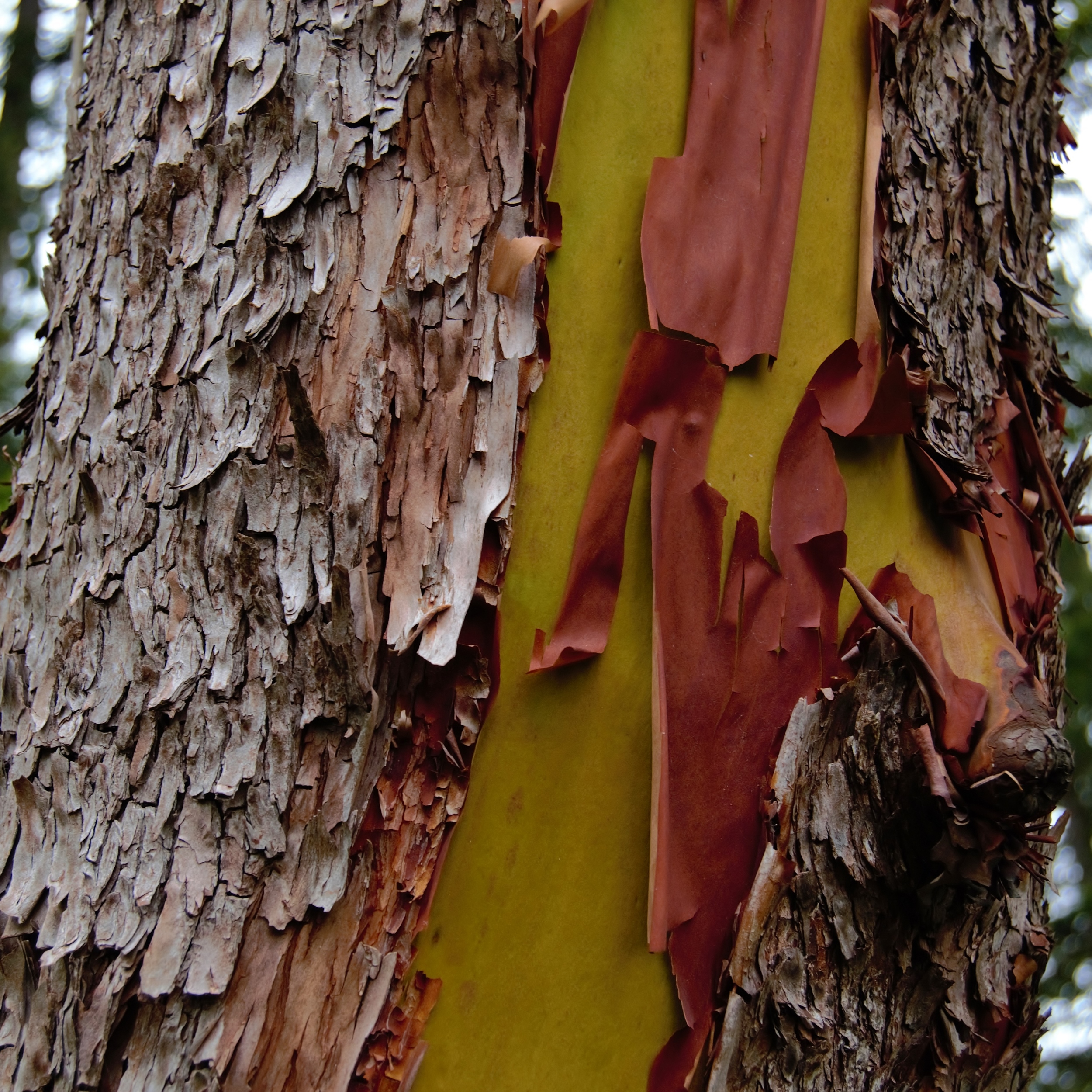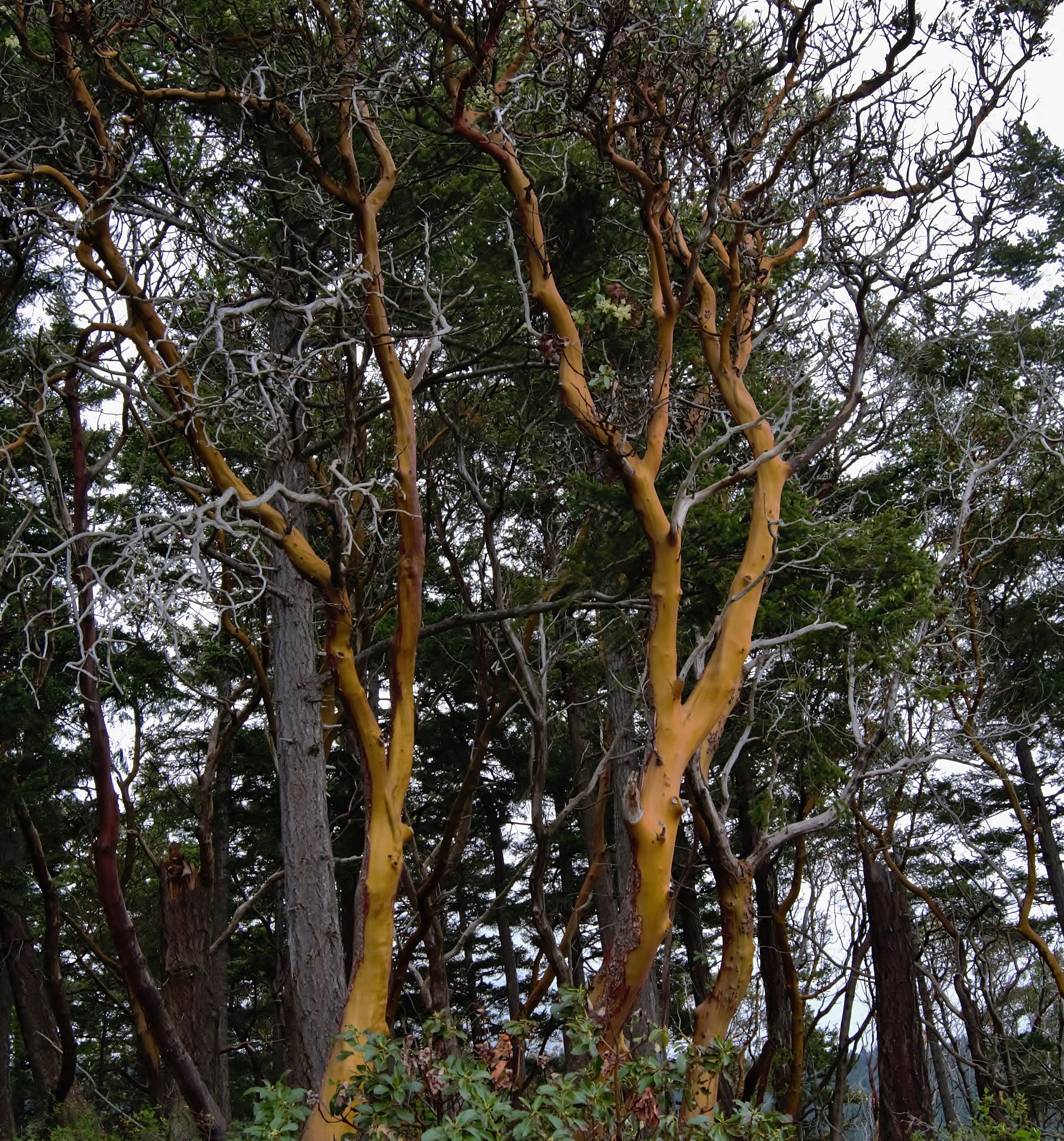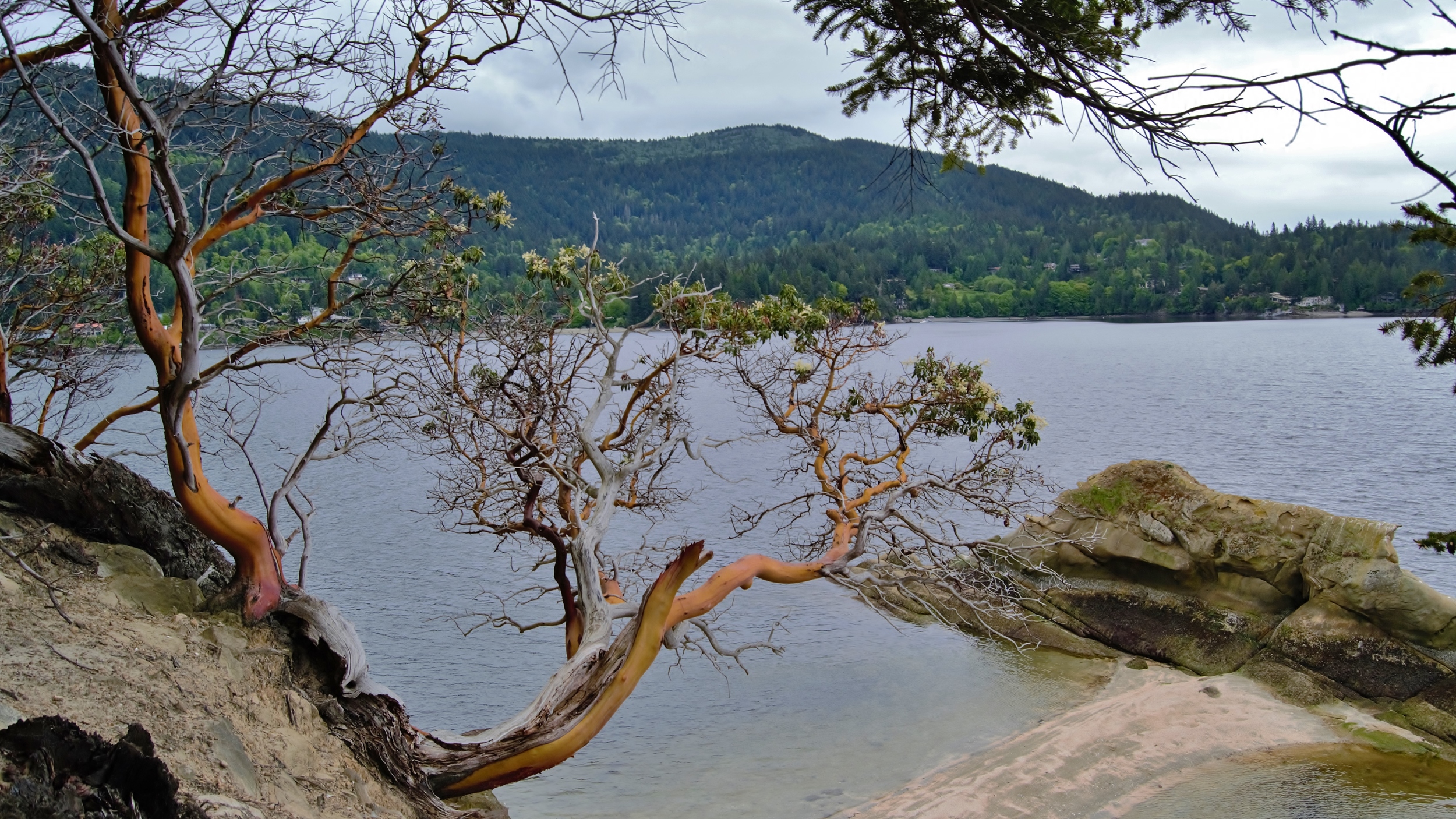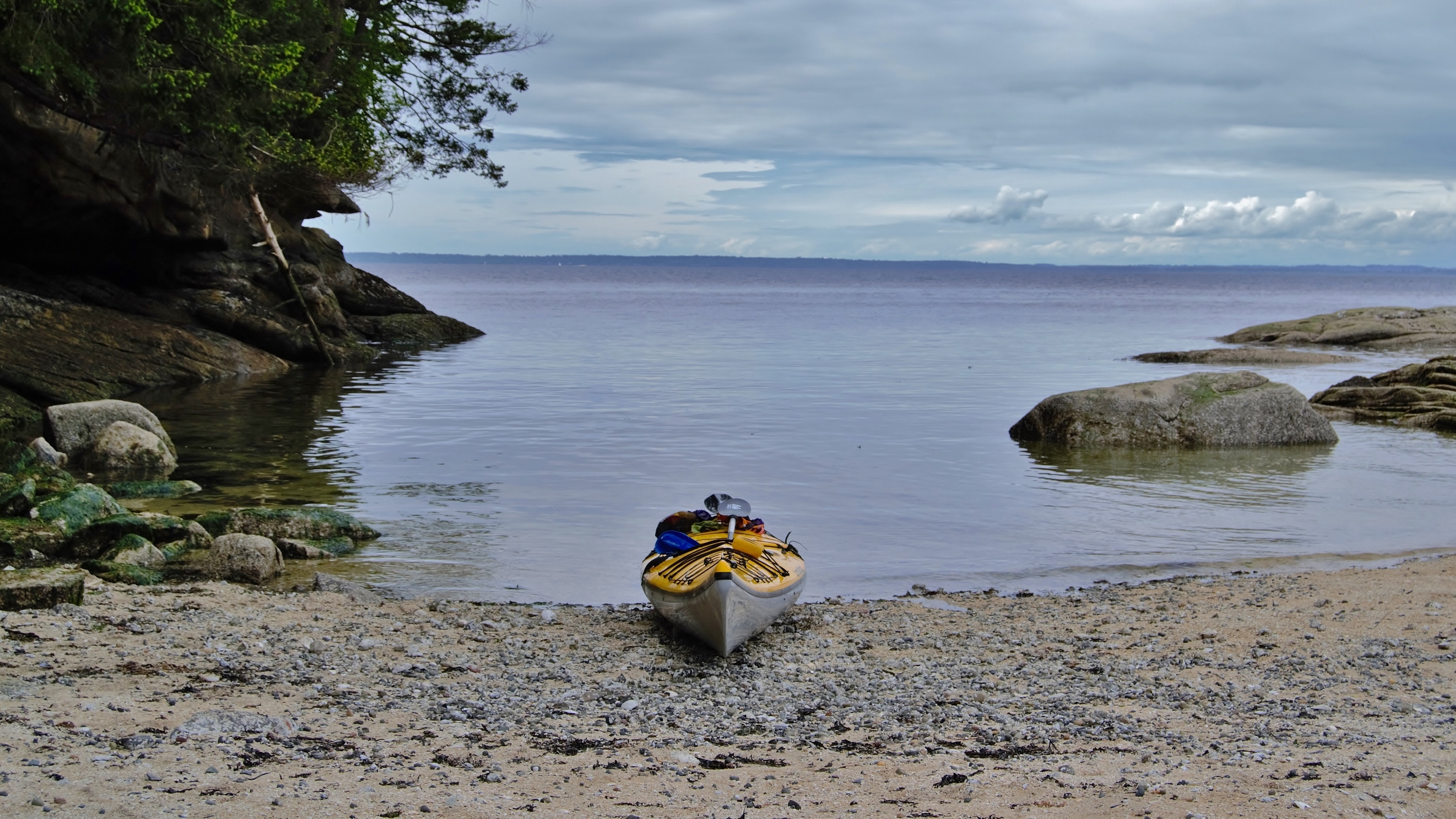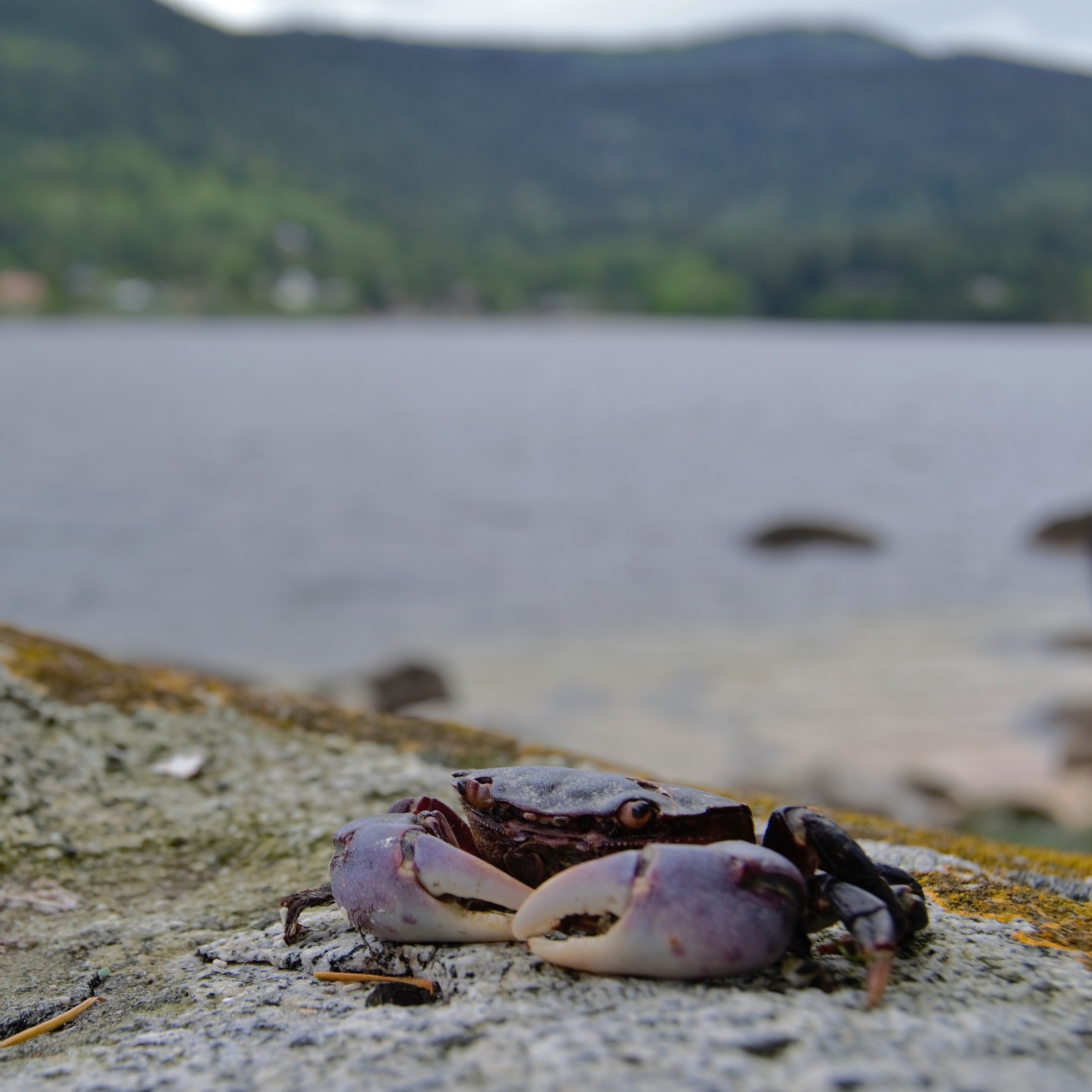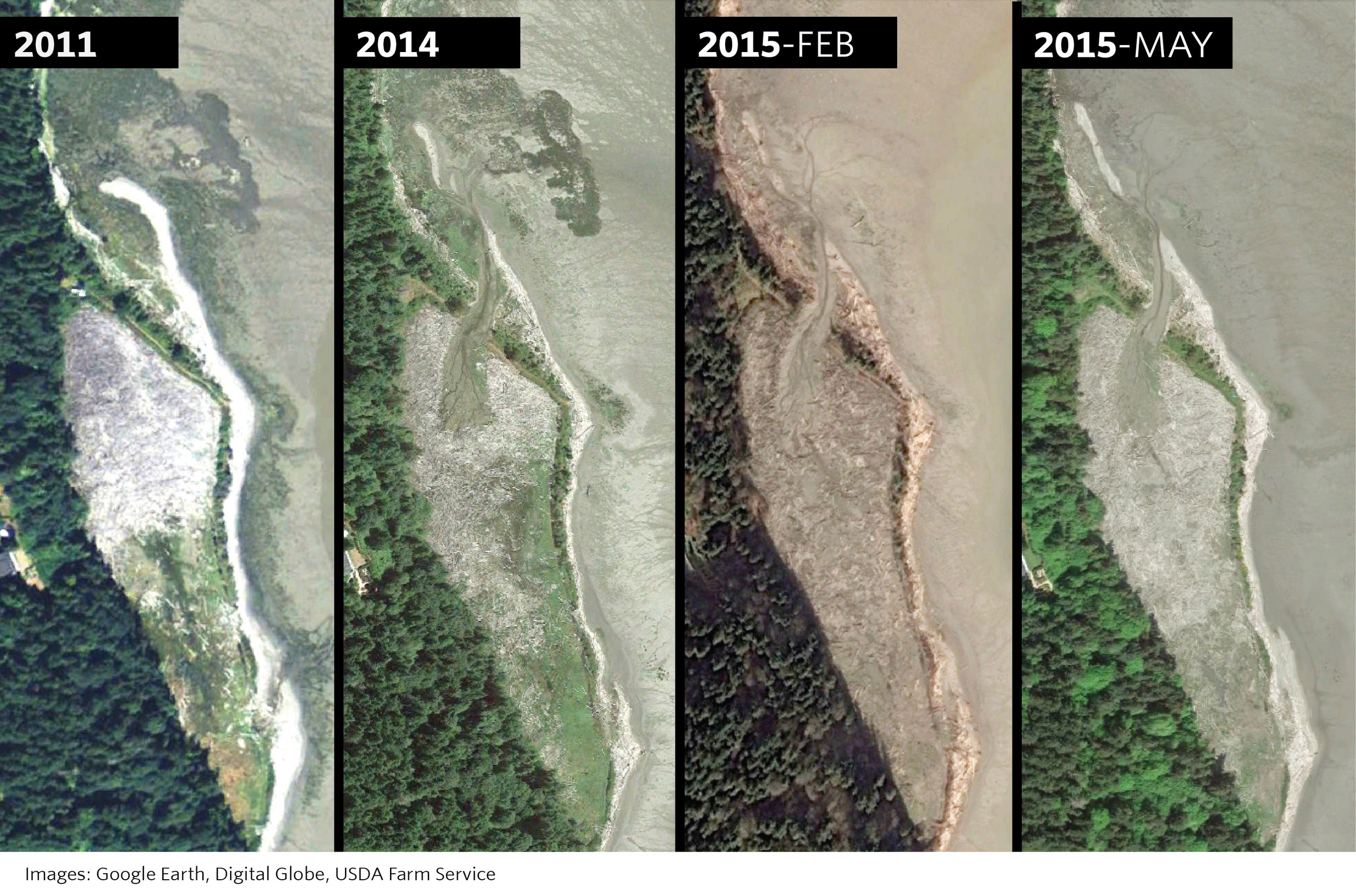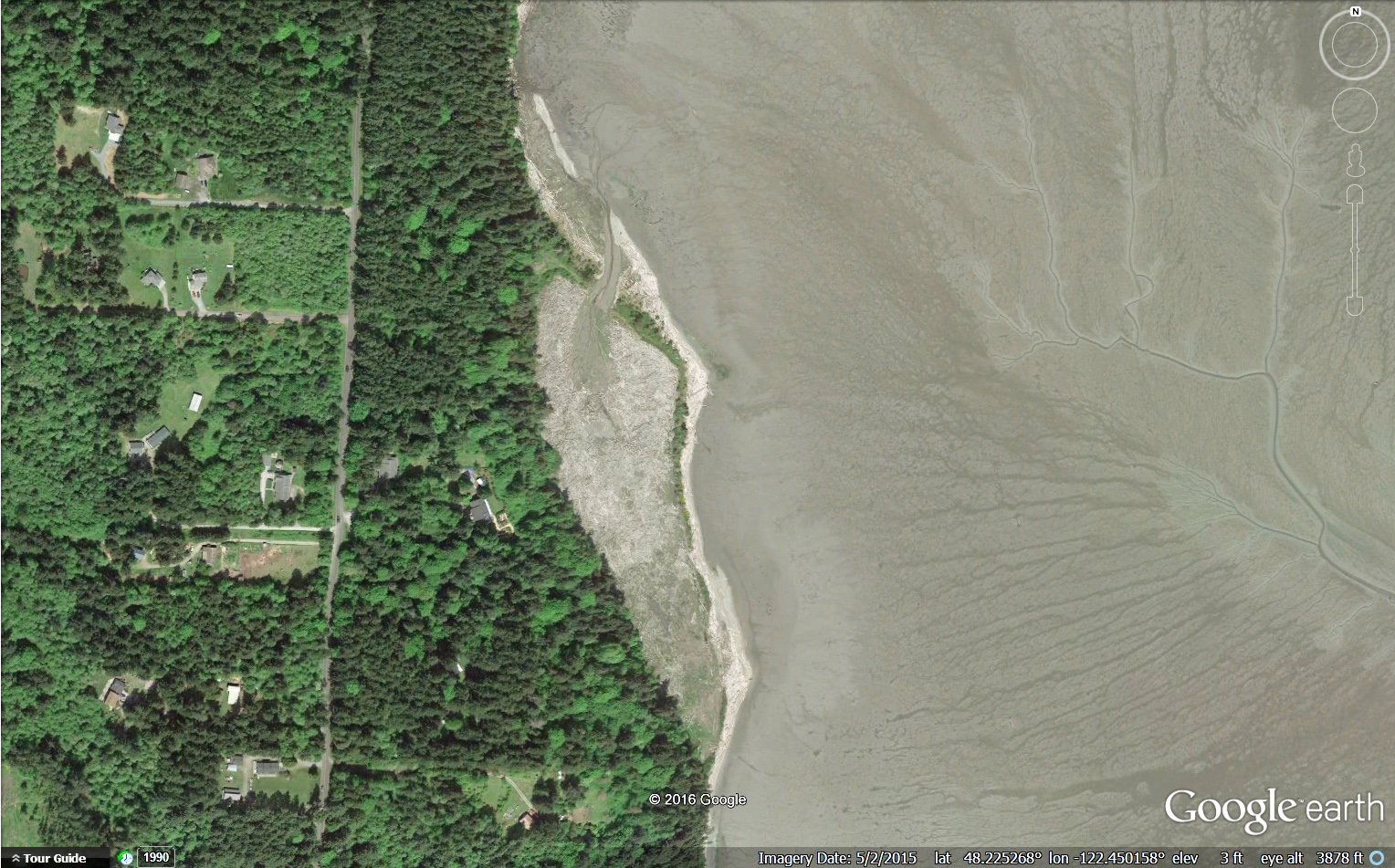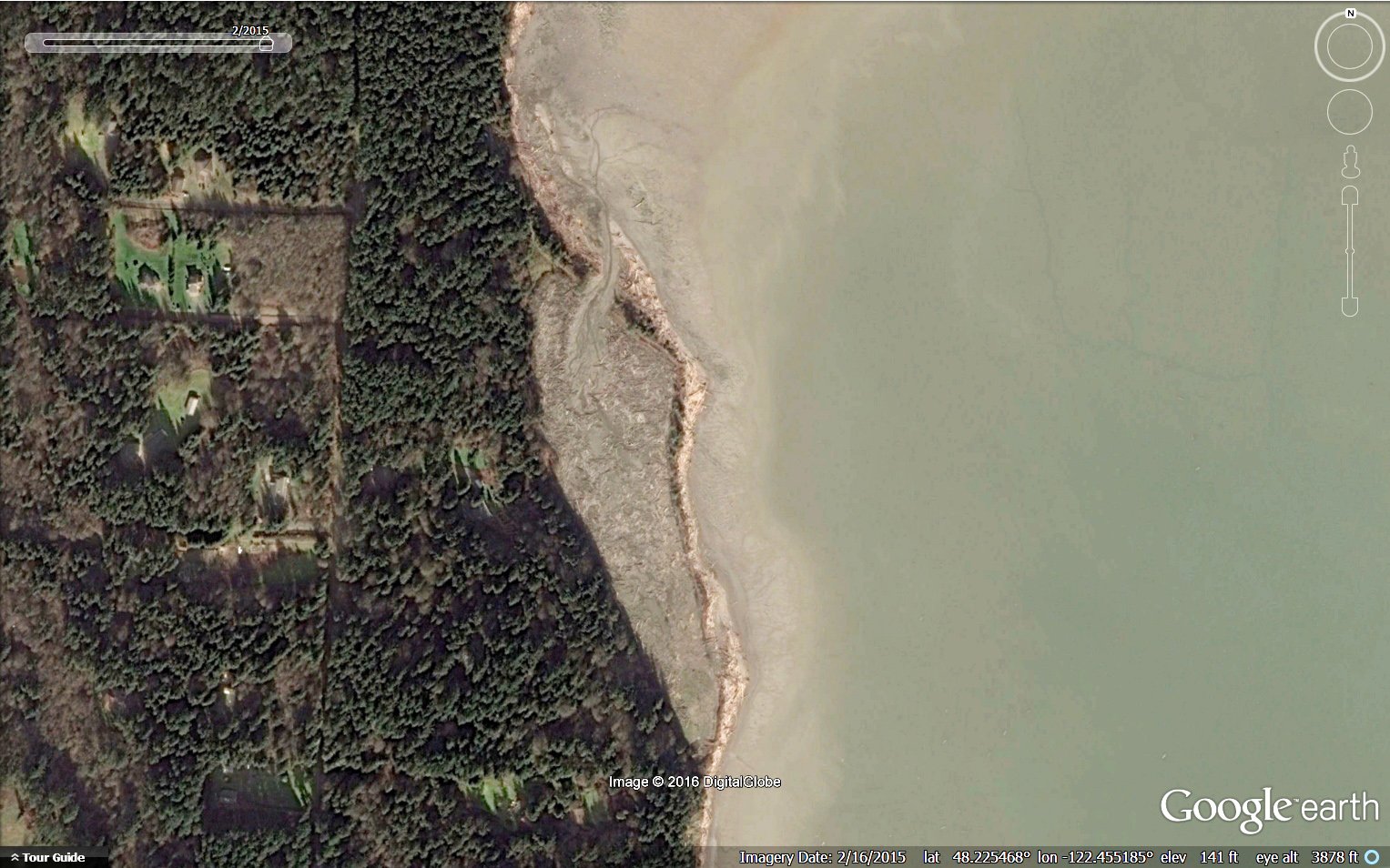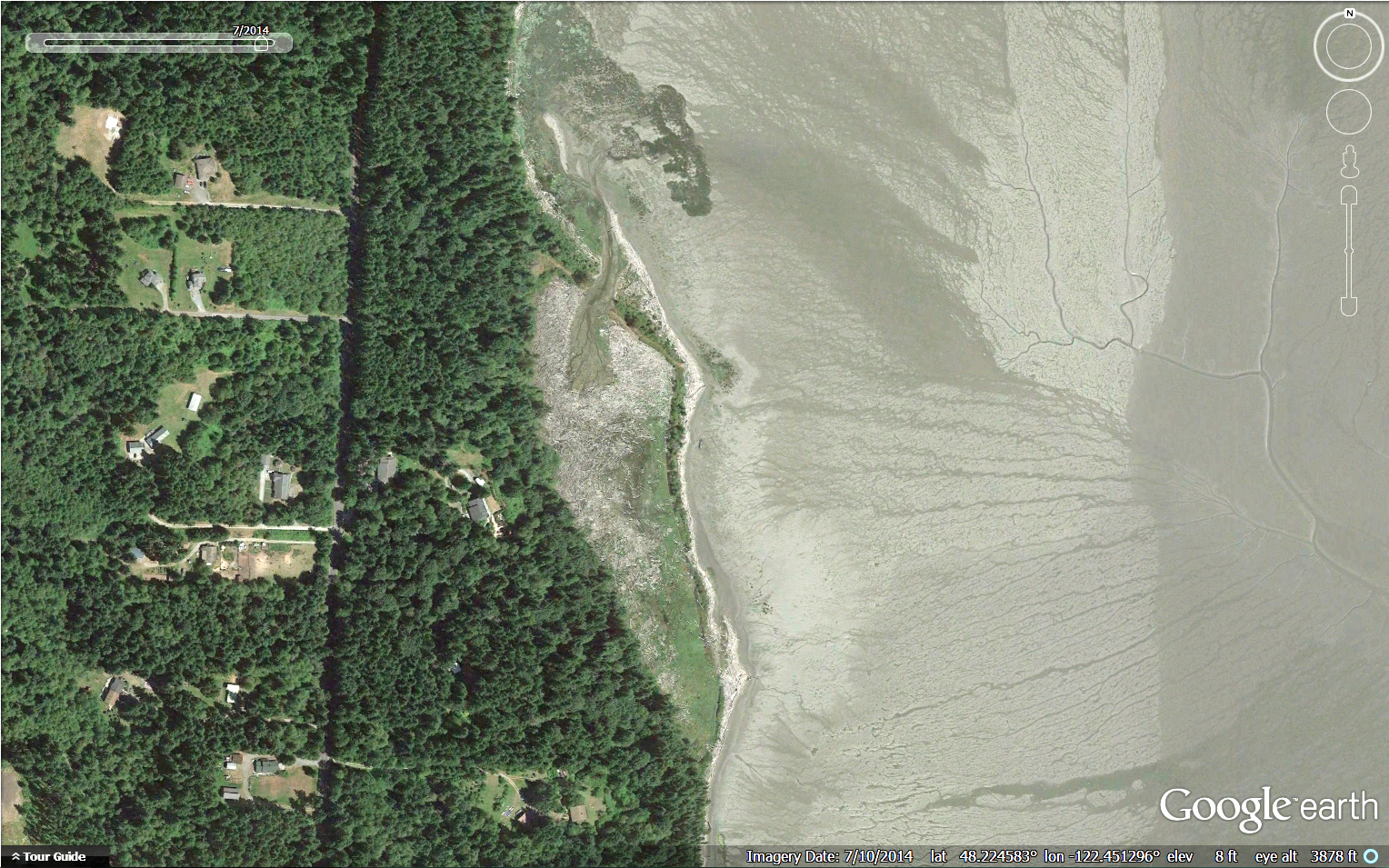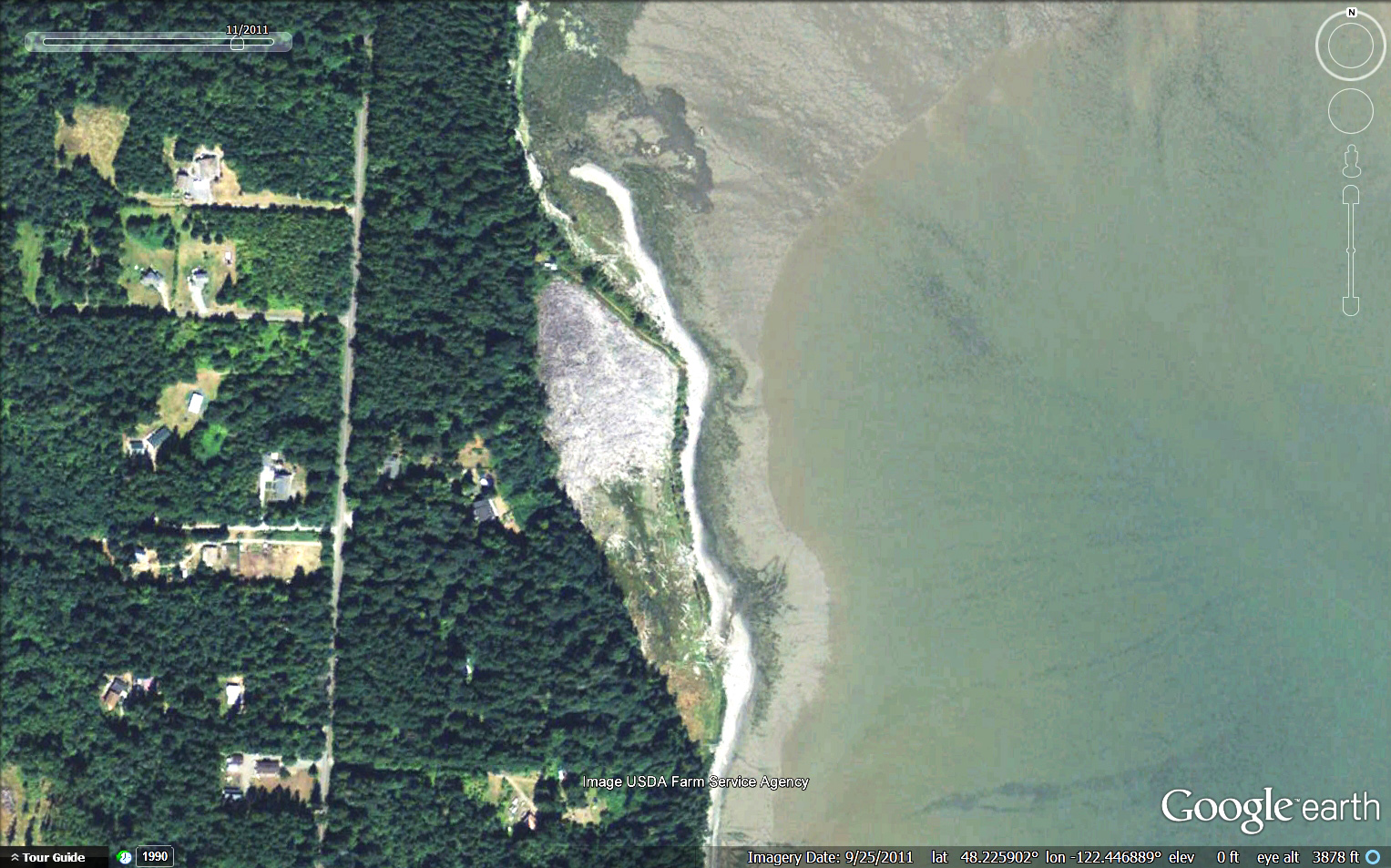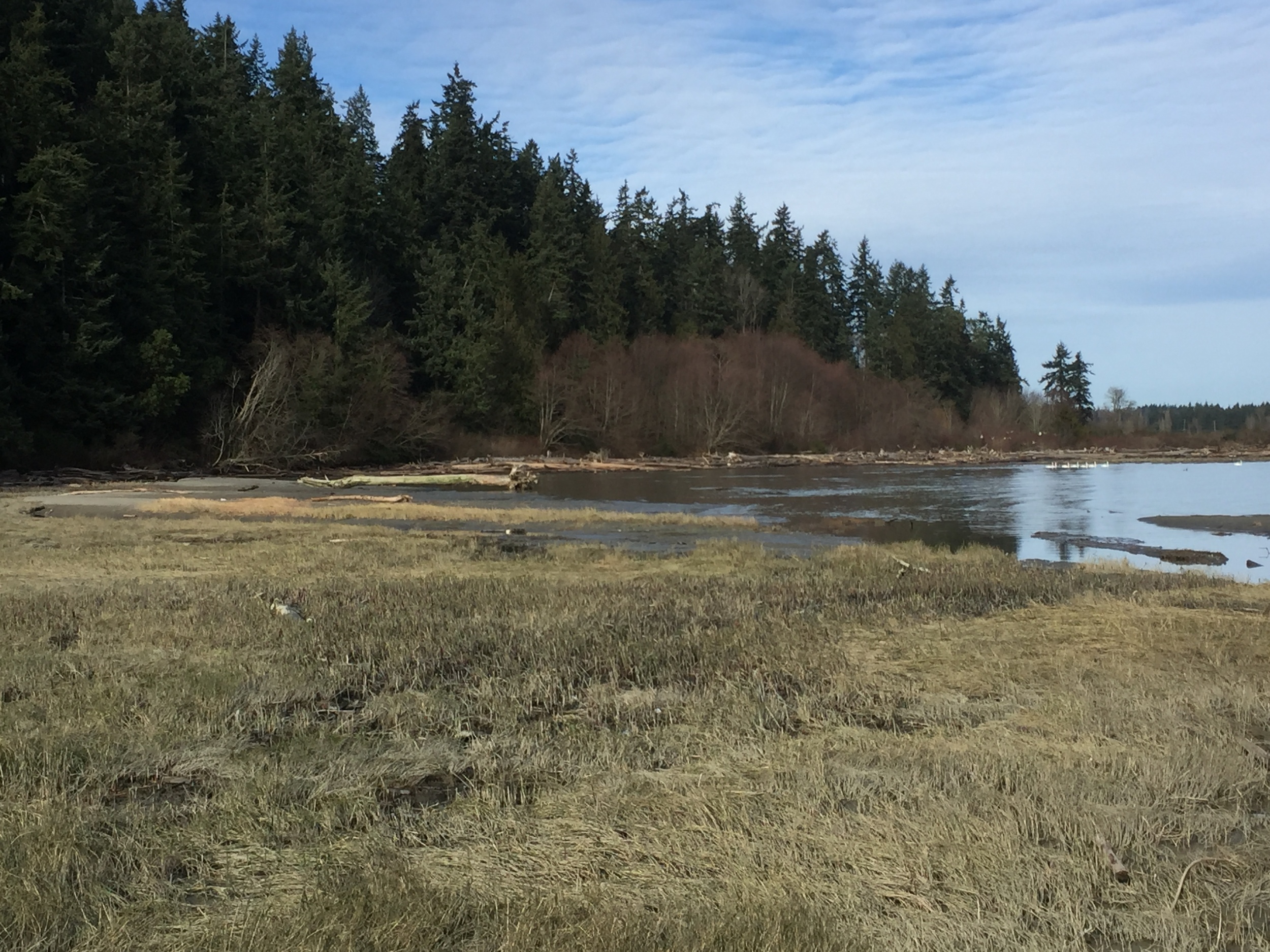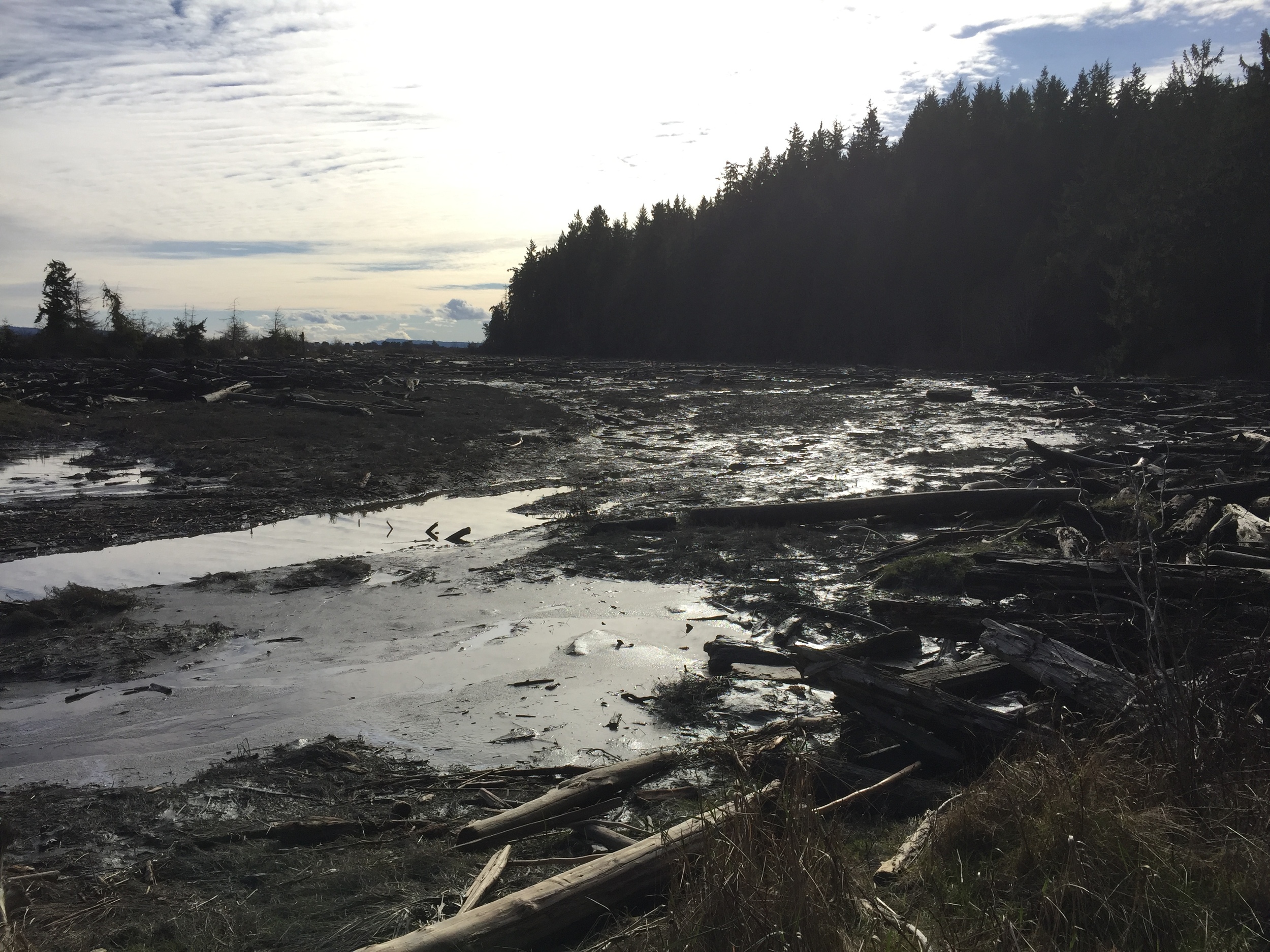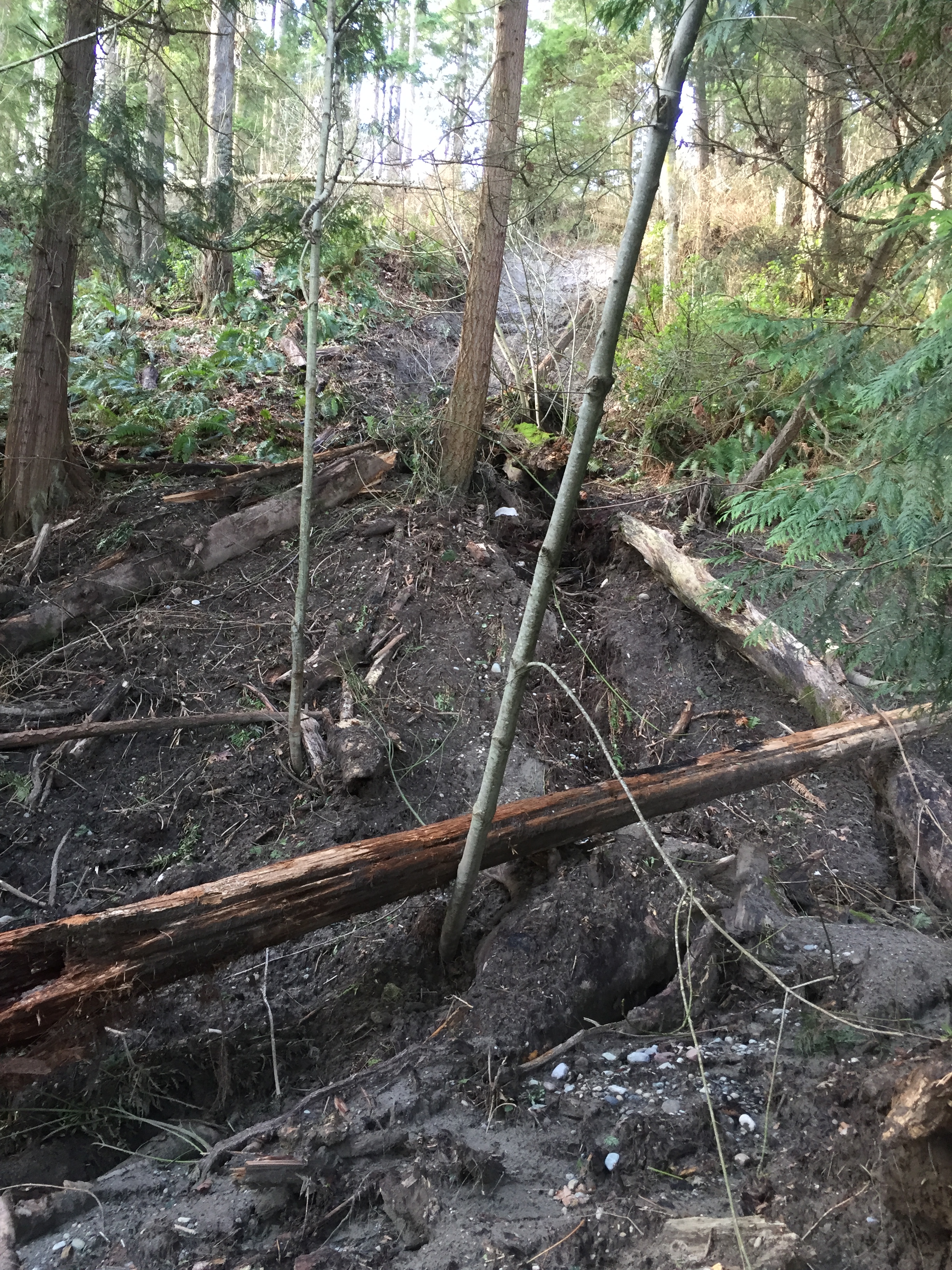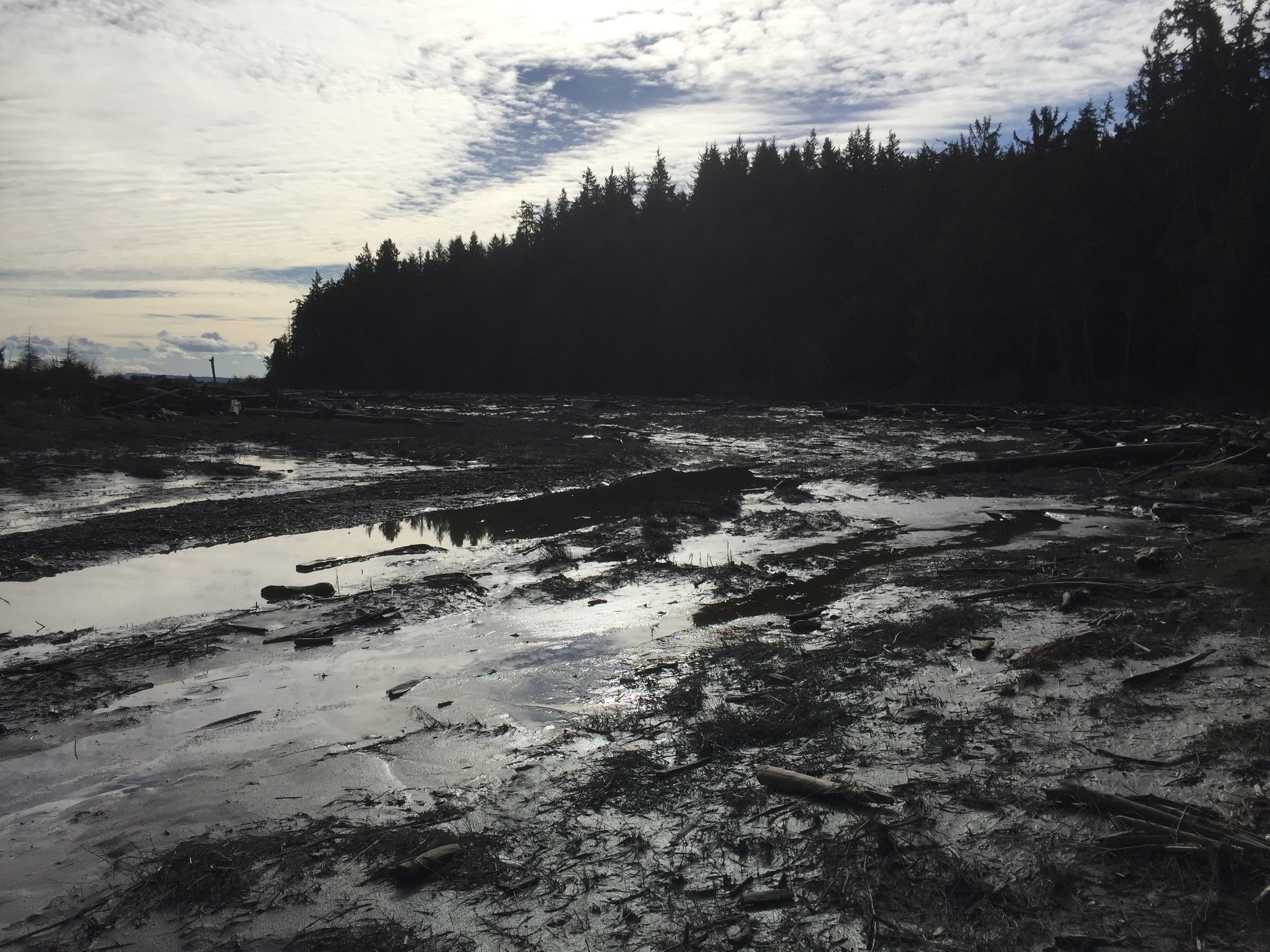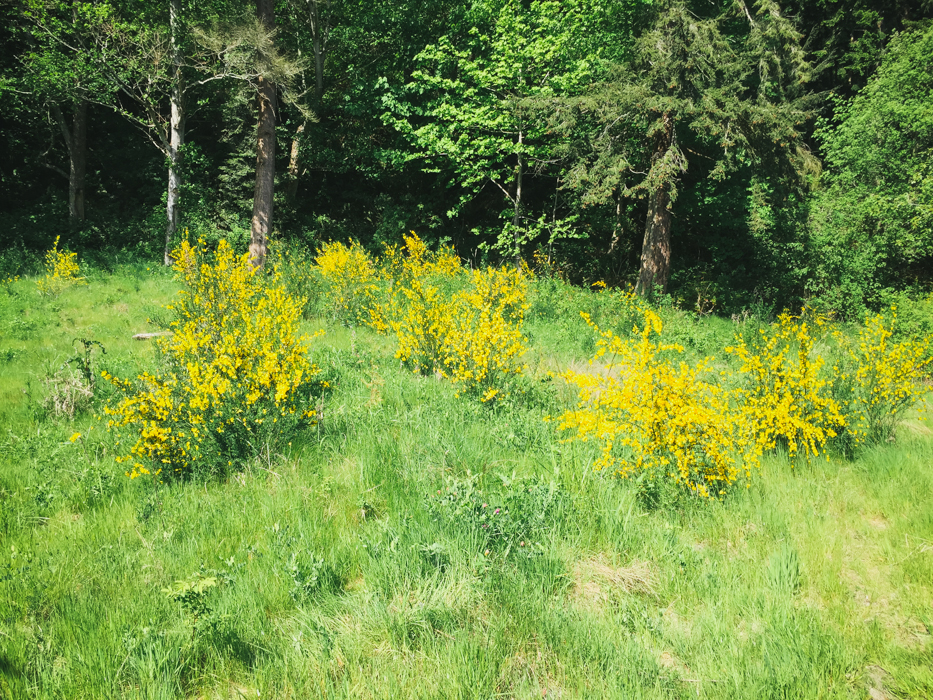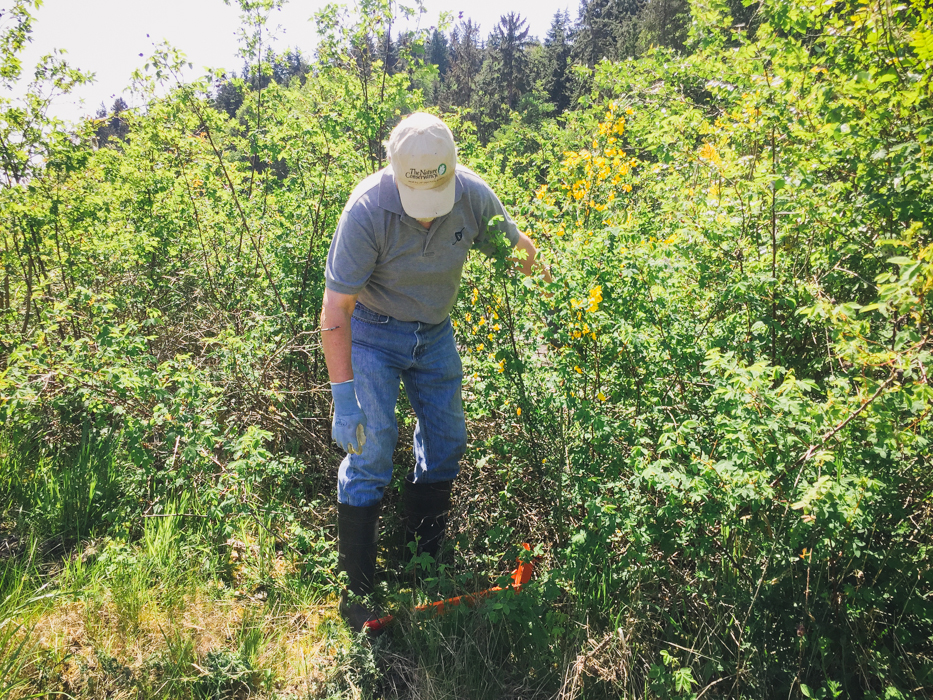Written by Jill Irwin, Volunteer
Photo Credit: Milo Zorzino
With explosive growth in the Pacific Northwest—especially in Seattle and Portland—more and more people are adding to the stresses on our rich and complex natural environment. How about pitching in to help keep this place beautiful and restore damaged habitats?
Recently a group I'm involved with spent part of a day volunteering with the Nature Conservancy at one of their sites in the Puget Sound region. (One of the cool things about helping out the Nature Conservancy is that their sites are often scenic and rarely open to the public. Hence, no crowds.)
On a breezy Sunday morning, about 10 of us, an eclectic collection of Zen Buddhists, a retired teacher, father and son duck hunters, conservation biologists, and more, met up near and carpooled to a private property to access the Livingston Bay Pocket Estuary site on Camano. Our goal for the day: pull invasive Scotch broom, which changes the chemical composition of soil and crowds out native plants.
Our Nature Conservancy coordinater for the event, Lauren Mihel, gathered us in a circle for introductions before heading down through the woods to the beach.
"What's your name and what are you excited about for fall?" she asked as an ice breaker.Our responses varied from "making soup again", "fall colors," "cooler weather and rain," and mine: "hiking to see the golden larches." Then we headed down to the estuary with tools for uprooting the Scotch broom and big plastic bags for picking up trash.
We spent a few hours uprooting most of the Scotch broom we could spot, and some of us walked the beach looking for trash.
On the outside of the pocket estuary, exposed to the ebb and flow of the tides, a lot of trash had washed up—plastic bottles, plastic lighters, plastic bags, a few stray shoes, old tires, bits of plastic, and even a big plastic trash can.
I filled a big bag until it got too heavy to squeeze in anything else. Sadly, this much trash, predominantly plastic refuse, is now common, even on wilderness beaches and shorelines. So there are plenty of opportunities to help clean up on your own, too.
We finished up a bit earlier than the allotted time, and gathered for Lauren and fellow coordinator Joelene Boyd to talk a bit about the site, ongoing restoration efforts here that began in 2012, its value as refuge for juvenile salmon, and the Nature Conservancy's programs in general. It's all part of a larger restoration effort in the area.
In a sweet gesture, Lauren passed around tins of excellent chocolate chip cookies she made for the group. And of course it was a beautiful, peaceful place to spend several hours on a sunny Sunday.
Overall it was a thoroughly enjoyable and rewarding day well spent. I met good people, got better acquainted with people I already knew, felt a sense of accomplishment, was outside moving in fresh air, and learned more about our precious Salish Sea ecosystem.
While there are many options for volunteering with the Nature Conservancy, there are lots of other organizations that could use your help too. Here are a few:
The U.S. Forest Service in the Pacific Northwest needs volunteers for many things such as trail maintenance and youth programs.Conservation Northwest has many volunteer needs for things like monitoring wildlife and planting native trees. EarthShare Washington and Oregon have a variety of volunteer and organizational needs. Portland Audubon and Seattle Audubon have active and well-organized volunteer programs. Sierra Club offers lots of ways to get involved. Washington Trails Association has regular work parties. The Portland-based Mazamas has lots of volunteer needs.
I could go on and on, although time doesn't permit it right now. Maybe you would like to suggest some ways to volunteer and your favorite environmental organizations by leaving a comment below! Or let me know if you'd like me to contact you with more ideas. Because it's important!
The Volunteer Crew
Seattle-born Jill Irwin blogs about the environment and everyday adventures in the Pacific Northwest. Read more of her stories on her blog Pacific Northwest Seasons












